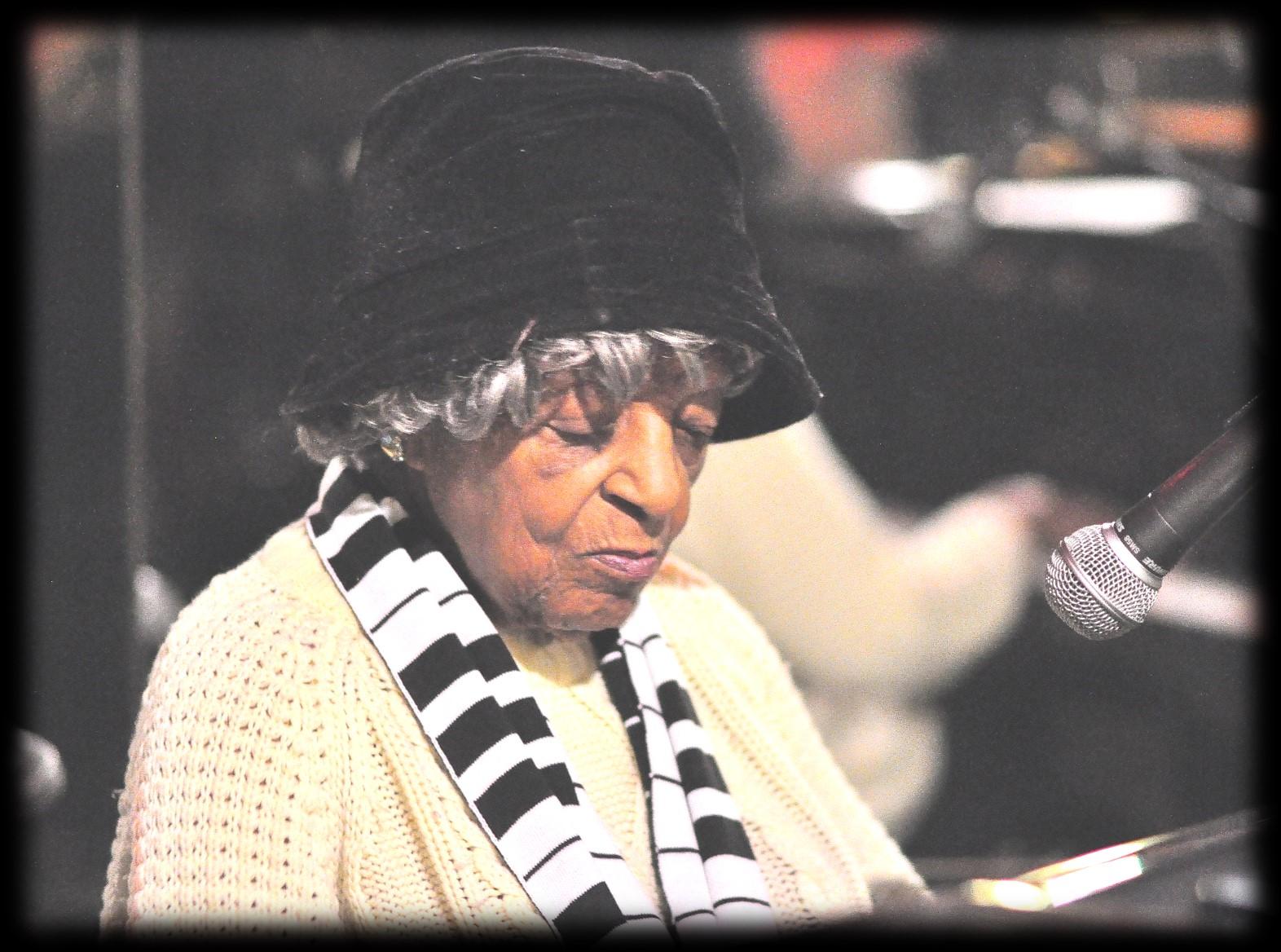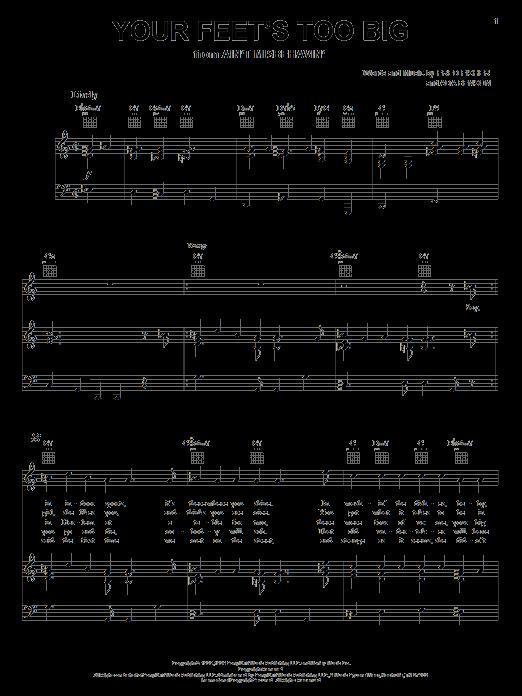Number 16
December 2021
The Big Four of Thurston County


Threads of Truth: The Henry Colter Affair
$5.00

Number 16
December 2021
The Big Four of Thurston County


Threads of Truth: The Henry Colter Affair
$5.00
The Thurston County Historical Journal is dedicated to recording and celebrating the history of Thurston County.
The Journal is published by the Olympia Tumwater Foundation as a joint enterprise with the following entities: City of Lacey, City of Olympia, Confederated Tribes of the Chehalis Reservation, Daughters of the American Revolution, Daughters of the Pioneers of Washington/Olympia Chapter, Lacey Historical Society, Old Brewhouse Foundation, Olympia Historical Society and Bigelow House Museum, South Sound Maritime Heritage Association, South Thurston County Historical Society, Thurston County, Tumwater Historical Association, Yelm Prairie Historical Society, and individual donors.
Publisher
Olympia Tumwater Foundation
John Freedman, Executive Director
Lee Wojnar, President, Board of Trustees
110 Deschutes Parkway SW P.O. Box 4098 Tumwater, Washington 98501
360-943-2550
www.olytumfoundation.org
Editor
Karen L. Johnson 360-890-2299
karen@olytumfoundation.org
Editorial Committee
Drew W. Crooks Jennifer Crooks
James S. Hannum Erin Quinn Valcho
The Journal does not offer a subscription service. To get your own copy, join one of the heritage groups listed at the top of this page. These groups donate to the publication of the Journal, and thus receive copies to pass on to their members. Issues are also available for purchase at the Bigelow House Museum, Crosby House Museum, and Lacey Museum, and occasionally at Orca Books in downtown Olympia and Hedden’s Pharmacy in Tenino.
One year after print publication, digital copies are available at www.ci.lacey.wa.us/TCHJ.
The Journal welcomes factual articles dealing with any aspect of Thurston County history. Please contact the editor before submitting an article to determine its suitability for publication. Articles on previously unexplored topics, new interpretations of well-known topics, and personal recollections are preferred. Articles may range in length from 100 words to 10,000 words, and should include source notes and suggested illustrations.
Submitted articles will be reviewed by the editorial committee and, if chosen for publication, will be fact-checked and may be edited for length and content. The Journal regrets that authors cannot be monetarily compensated, but they will gain the gratitude of readers and the historical community for their contributions to and appreciation of local history.
Opinions expressed by contributors are not necessarily those of the Olympia Tumwater Foundation.
Written permission is required to reproduce any part of this publication.
Copyright © 2021 by the Olympia Tumwater Foundation. All rights reserved.
ISSN 2474-8048
Number 16
December 2021
2 The Big Four of Thurston County

James S. Hannum, M.D.
25 Threads of Truth: The Henry Colter Affair
Karen L. Johnson
Back Cover
Who/What/Where Is It?
On the cover: Bridge on the Ellis Cove tram railway, near South Bay, circa 1885. Photograph C1986.8.7, courtesy of Washington State Historical Museum.
See related article on page 2.
Most people familiar with the history of 19th Century California have heard of that state’s Big Four. All were merchants who migrated to the Golden State from the East during the early days of the Gold Rush. Collis P. Huntington, Leland Stanford, Mark Hopkins, and Charles Crocker had already prospered in the 1860s when they associated with each other while building the Central Pacific Railroad.
A few decades later and on a much smaller scale, Thurston County also had a group of four businessmen who were pioneers in constructing railroads within that county. Although they were never formally designated as the “Big Four,” their achievements could well qualify them for that accolade. They were George H. Foster, Isaac Chase “Ike” Ellis, Amos Brown, and Benjamin Buckman Turner. The relationships among them were complex.
GEORGE H. FOSTERFoster was an Olympia businessman who was involved in the construction and operation of three Thurston County logging railroads. The first was tributary to a terminal where logs were dumped into Ellis Cove; the second was located along Percival Creek; and the third interchanged logging cars
with the Olympia & Chehalis Valley Railroad at Bush Prairie. All these lines existed in the 1880s.
Foster was born in New Hampshire about 1841 and was living with his parents, Amos H. and Sarah Foster, in Lowell, Massachusetts in 1860.1 That year, his future bride, Lydia J. Laberee, also resided in Lowell. Lydia worked in a mill there, after emigrating from Compton County, Quebec, Canada. By 1870, George had relocated to Olympia.2 He travelled east and married Lydia at Eaton (east of Sherbrooke), in Compton County on December 14, 1871.3 The same day, the couple departed for Olympia from Lennoxville, a borough of Sherbrooke. In 1880, George and Lydia resided in Olympia on Main Street (now called Capitol Way) between what is now Legion Way and 7th Avenue.4 Lydia passed away in 1888 and George then married Mamie Henry. That union ended in divorce and George H. Foster died at Tenino December 8, 1903.5
Ike Ellis was born in Maine in 1832. Ellis’ obituary was printed in the June 9, 1910 Olympia Daily Recorder. It notes that he came to Washington Territory in 1854 and died at his Olympia home at 609 Main Street. “He
logged for the old Yesler mill in Seattle and through his logging operations at one time owned the townsite of what is now West Seattle. . . . Mr. Ellis retired from active work in the late 80s and invested heavily in Olympia. At a cost of $50,000 he built the Lacey race track, which proved a heavy financial loss. He suffered other financial reverses in the 90s along with many other Olympians. . . . In the early eighties Mr. Ellis was mayor of the town of Olympia and served two terms as a member of the city council. . . . Mr. Ellis is survived by a wife and two children. He was married before coming to Olympia, but was divorced from
his first wife. Twenty-two years ago he was married again to Miss Eva Toellmer of this city. His daughter, Mrs. Cora (J.) Ayers, resides at Plum Station and his son, Hiram J. Ellis, is in Seattle.”6
Amos Brown was born at Bristol, in Grafton County, New Hampshire July 29, 1833. The September 1899 issue of The Washington Historian reports that he arrived in Port Gamble, Washington in 1859 and later moved to Olympia. He died in San Francisco on April 8, 1899.7
Brown was an early investor in undeveloped Seattle real estate, which proved to be the basis of his fortune. He resided there in 1870.8 He and his partners built the old Occidental Hotel in that city. By 1880, Brown and his family had relocated to Olympia. They lived on Main Street (now called Capitol Way) between what now is 5th Avenue and Legion Way. Brown’s occupation was said to be “logger.”9
Isaac Chase “Ike” Ellis, taken between 1860 and 1880. Photograph C2018.0.10, courtesy of Washington State Historical Society.
Benjamin B. Turner was born December 13, 1840 at Columbia Falls, Maine10 and came to Olympia in 1870. He was married to Oretta Young. After 1896, his permanent residence was at Woodard Point11 (now part of Thurston County’s Woodard Point Park). Turner had done some of his early logging there, in the area of South Bay, using traditional methods. He must have been a fairly rough character, for Oret-
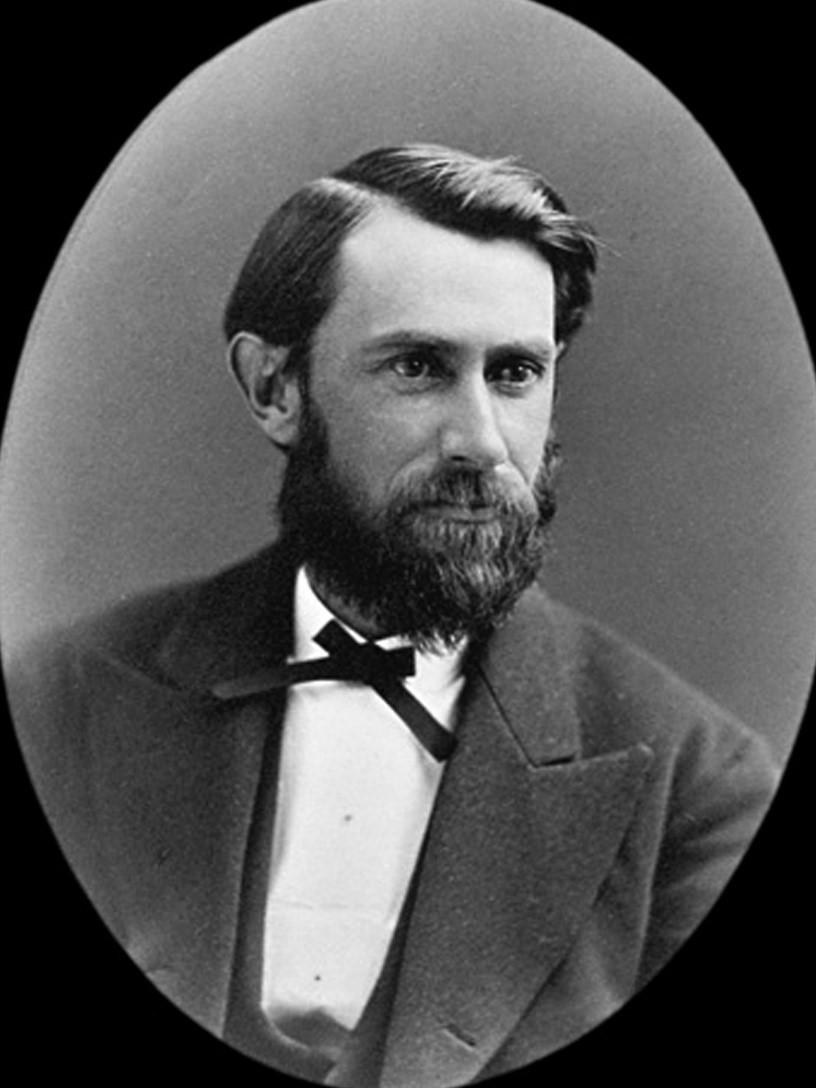
ta sued him for divorce in July 1889.12 She alleged drunkenness, bad temper, and vulgarity. However, the divorce was not granted. South Bay: Its History & Its People reports that Turner and his wife Retta moved to the area of Woodard Bay in 1896, after Turner lost everything in the “Panic of 1893.” Ben Turner passed away January 22, 1923.
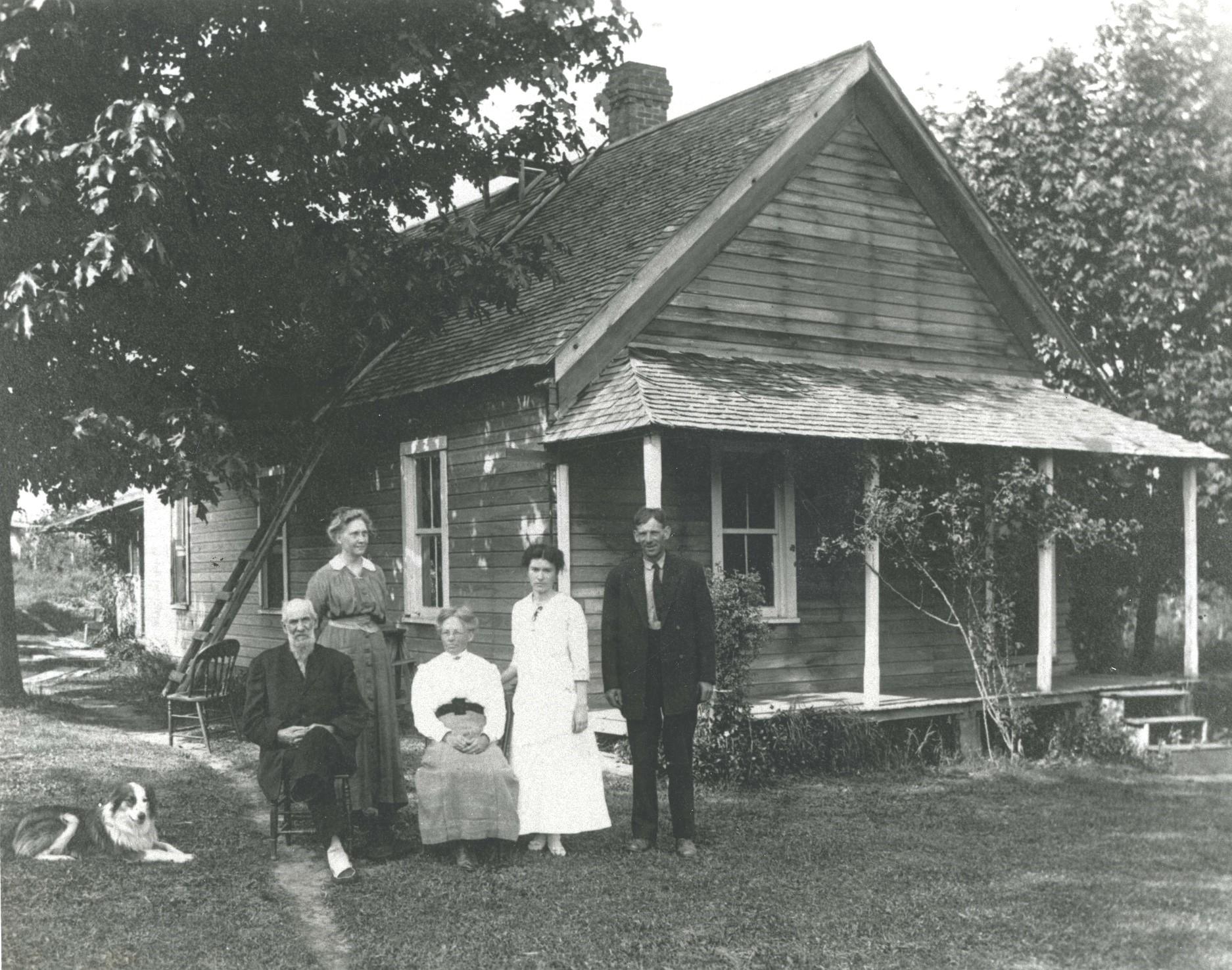
had numerous intersections. Sometimes they worked together harmoniously. At other times, their interests diverged and they were competitors. In addition, all of them had extensive dealings with two large, non-Thurston County companies, the Port Blakely Mill Company and the Tacoma Mill Company.
These relationships will be illustrated by examining the roles Foster, Ellis,
Brown, and Turner played in the history of five separate Thurston County logging railroads. The order in which these lines will be described is not always chronological. The first line was a tram railway that dumped logs at Ellis Cove, where Priest Point Park is now located. The second was the Olympia & Mount Rainier Railroad, which connected Olympia’s East Waterway with Chambers Lake. The third railroad, located along Percival Creek, linked West Olympia with the region near the present-day campus of South Puget Sound Community College. A
fourth logging line connected to the Olympia & Chehalis Valley Railroad at Bush Prairie. Last to be described is the Black Lake & Sherman Valley Railroad. It extended the Percival Creek railroad farther southwest, to Black Lake.
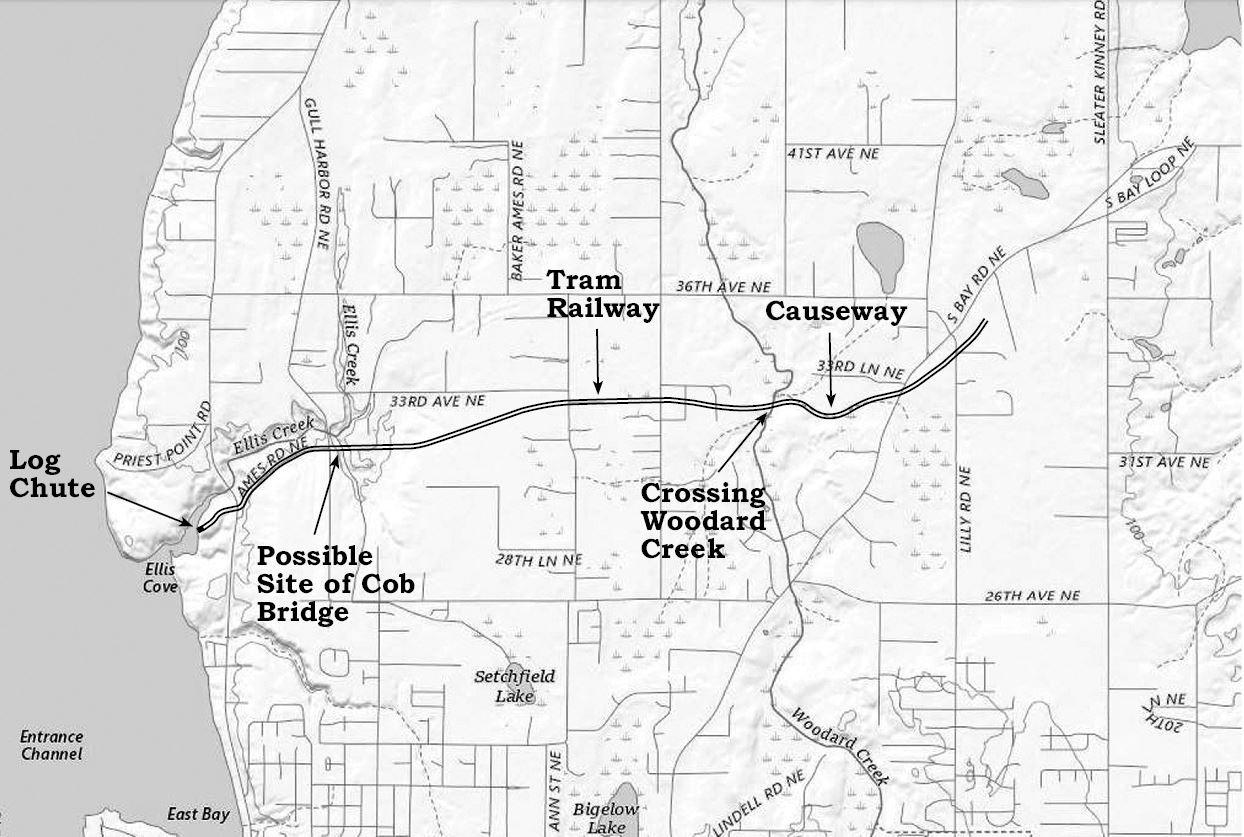
A map showing the exact course of the tram railway, which was used to dump logs at Ellis Cove, has not been located. Figure 1 is a map drawn by the author. It postulates the likely
path followed by the tram. However, conclusive proof for this route cannot be given. Foster, Ellis, and Brown were all involved in this venture. By 1874, Foster and Ellis, operating as Foster & Ellis, began buying forest land and timber rights in the region northeast of Olympia.13 There, Ellis Cove and Ellis Creek took their names from one of the partners. It is unclear when logging started on those properties; possibly, the harvest commenced using a skid road (a road along which logs are skidded or hauled). Just when the tram railway was installed has not been determined.
A deed dated March 1, 1881 records that George H. Foster and Isaac Chase Ellis, doing business then as G. H. Foster & Company, sold to Amos Brown, for $14,000, all rights and titles to timber claims, camps, camp fixtures, teams, boom-chains, and franchises belonging to the logging business of G. H. Foster & Company, which operated on the east side of Budd Inlet. The property included 30 oxen, three horses, two double wagons and harness, two cars, boom chains, camp and camp fixtures. More specifically, the sale included all rights-ofway, franchises, privileges, and rights to cut timber and remove timber or logs that had been conveyed to Foster & Ellis from J. R. Patterson, George A. L. Agnew, D. R. and A. E. Bridges, Oscar M. Fuller, B. F. Corliss, George F. Whitworth, Jane Galiher, Marshall Blinn, Edmund Rogers, C. (Crowell) H. Sylvester, Thomas Prather, and John D. Judson. Although “two cars” are mentioned, the document does not
In a separate document signed the same day and recorded March 4, 1881, Brown signed over his interest in the above mentioned real and personal property, franchises and rightsof-way, to the Port Blakely Mill Company.15 Clearly, he was acting in some fashion as a broker for a transaction between Foster & Ellis and the mill company. Brown’s apparent benefit in performing that function was clarified by an article that appears in the February 4, 1882 Olympia Transcript. It mentions that Brown was operating a 2.5-mile road “near the C.H. Sylvester place on South Bay Road, running logs to the bay.” Cars were pulled by horses and donkeys.
On June 2, 1882, Amos Brown sold additional land, timber rights, and franchises in the area where the tram railway operated, to the Port Blakely Mill Company. Another document dated the same day seems to clarify the papers signed March 4, 1881. Therein, Brown reiterates the conveyance of several items to the Port Blakely Mill Company. But the list differs significantly in that it includes the tram railway: “44 oxen, 3 horses, sundry tools, buildings at the camp, roads, bridges, dam, railroad, 2 cars at camp, 1 car at Mud Bay, 2 wagons, supplies at camp, supplies in warehouse, at Olympia, feed and hay, chains, ropes, harness, saddles.”16
Further insight into the nature of the tram railway is preserved at the Lacey Museum. The museum has docu-
ments obtained by Denise Keegan at the time she recorded an oral history given by Elizabeth Ayer, who resided at Panorama City. Elizabeth was a granddaughter of Ike Ellis. The date of the interview is not recorded; the data was transcribed by Lanny Weaver. An undated and unidentified newspaper clipping was reviewed by Keegan and transcribed by Weaver: “How many Olympians, I wonder, have seen the ‘cob-house’ bridge which supports a section of I. C. Ellis’ skid road? It is nearly a mile from the terminus of the road. Built of huge logs, grown white with age, it rises like a ghostly trestle, eighty feet from the bed of the ravine. The big trees, two or three feet in di-
ameter, are laid criss-cross, precisely as children build houses with corn cobs, and completely fill the ravine from top to bottom and from side to side. One would hardly think that such a structure could settle or be crushed but it is so. Mule trains, laden with giants of the forest, daily passing over the eight-foot track, so depress it in the middle that at long intervals a new layer of logs must be added, and the track raised. Marks of the old roadways thus overlaid show the total depression during the fifteen years of its existence to have been five or six feet.” This statement suggests that the article may have been published between 1890 and 1895.
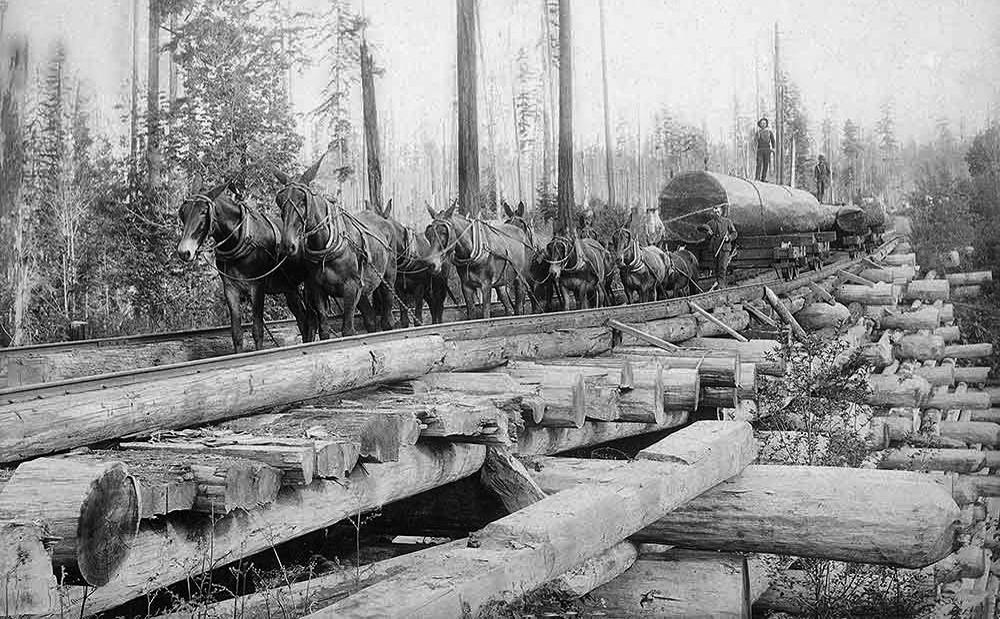
A photograph in the collection of the Washington State Historical Society is identified: “Created ca. 1885,” “South Bay, W. T.”17 It seems compatible with the “cob-bridge.” Precisely where this image was made has not been established with certainty. One possible site is the place where the tram railway must have necessarily crossed Woodard Creek. That spot would have been relatively close to the South Bay community. On the other hand, the Elizabeth Ayer newspaper clipping suggests that the bridge was less than a mile from the terminal at Ellis Cove. If that is correct, then a logical site would be at a position immediately east of the intersection of Ames Road and Gull Harbor Road. There, the right-of-way would have crossed a deep ravine, which is occupied by a stream that empties into Ellis Creek.
There are several reasons why a precise location for the tram railway has been challenging to determine. It appears that little, if any, grading of the right-of-way was done. Few convincing telltale features can be found by reviewing available aerial photographs and modern Li-
DAR ground imaging. None of the maps consulted from that era show the line.
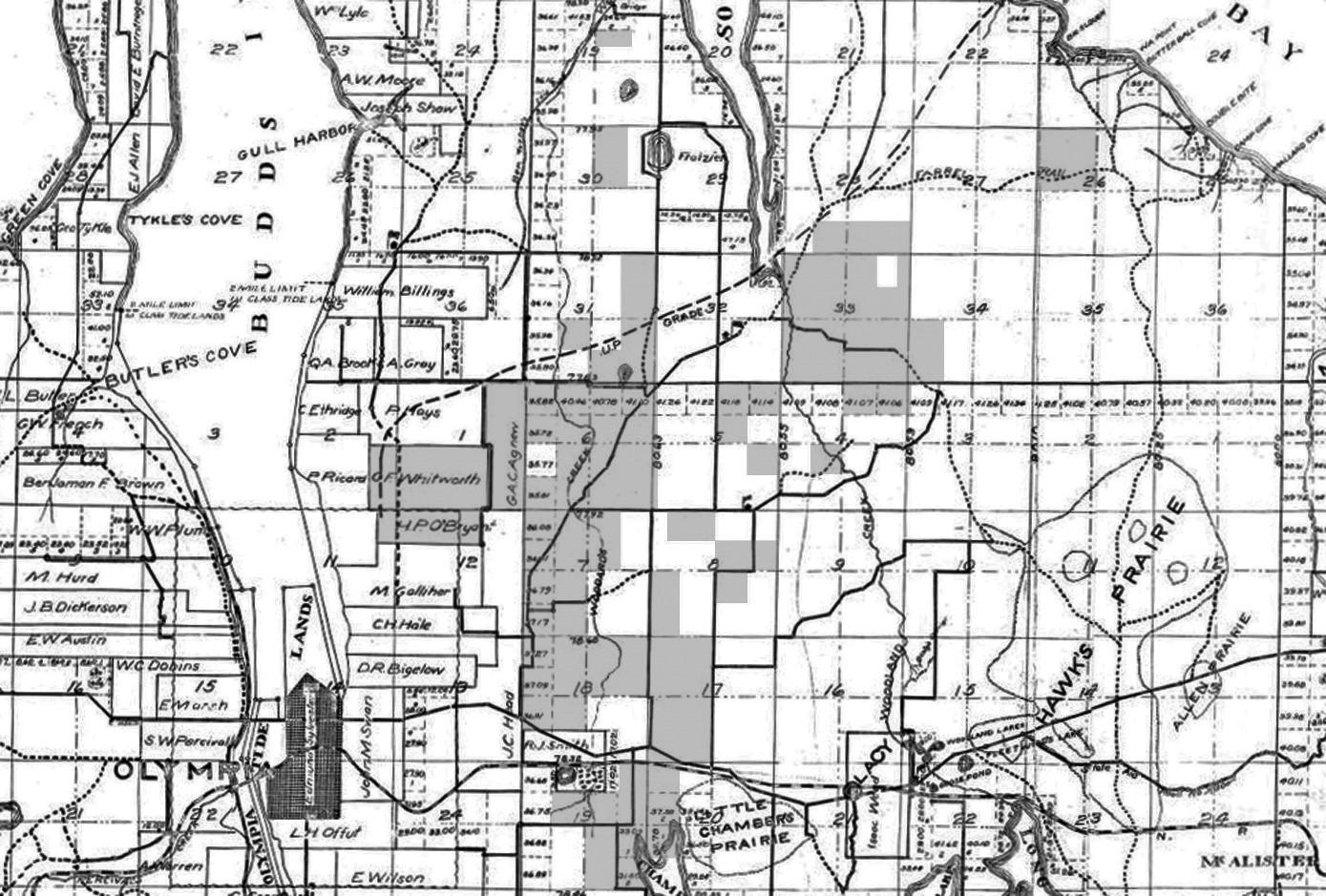
The right-of-way visible in Figure 1 seems plausible after reviewing a variety of facts. Figure 2 represents the properties controlled by operators of the tram railway. It is drawn on part of a 1909 map. That no right-of-way deeds were filed for the tram road (which would certainly assist in locating the grade) is partially explained by the fact that much of the land through which it passed was owned by the operators of the tram.
It is reasonable to suspect that any survey used for the tram road would have followed the shortest feasible
route (regarding adverse grades) between the community of South Bay and Ellis Cove. It likely would have crossed Woodard Creek at a place where a bridge or trestle would be as short as possible.
Between Gull Harbor Road and East Bay Drive, near the western end of the line, it seems logical that the tram railway followed, in general, the path now occupied by Ames Road. About 1890, the Portland & Puget Sound Railroad located part of its surveyed (but unoperated) right-of-way there; that path was appropriated subsequently for construction of Ames Road. Figure 3 is part of a survey map archived at Thurston County Roads and Transportation Services. Visible is the intersection of Ames Road and Gull Harbor Road. Today, that intersection is approximately 100 feet east of its former location. The current Gull Harbor Road, at the intersection, appears to have been elevated when it was rebuilt and straightened. Immediately east of that intersection, a shelf is visible. It is at a significantly lower level than Gull Harbor Road. The shelf may represent the grade used by the tram.
West of East Bay Drive, the tram’s right-of-way generally follows a trail in Priest Point Park. There, it traverses
relatively flat terrain. That trail leads to a promontory overlooking Ellis Cove. The author’s diagram displaying these features is presented in Figure 4 which is part of a map produced by the City of Olympia. From the promontory, a chute or incline must have been employed to transfer logs down to water level in the cove.
Near the east end of the line, in Section 6, Township 18 North, Range 1 West, a small length of likely grade can still be found as an elevated causeway across a wetland. The grade is located on private property immediately west of the residence at 3139 South Bay Road.
Shaded areas in Figure 2 identify timberland controlled by the tram operators. It is logical to question how timber from the southerly portion of these
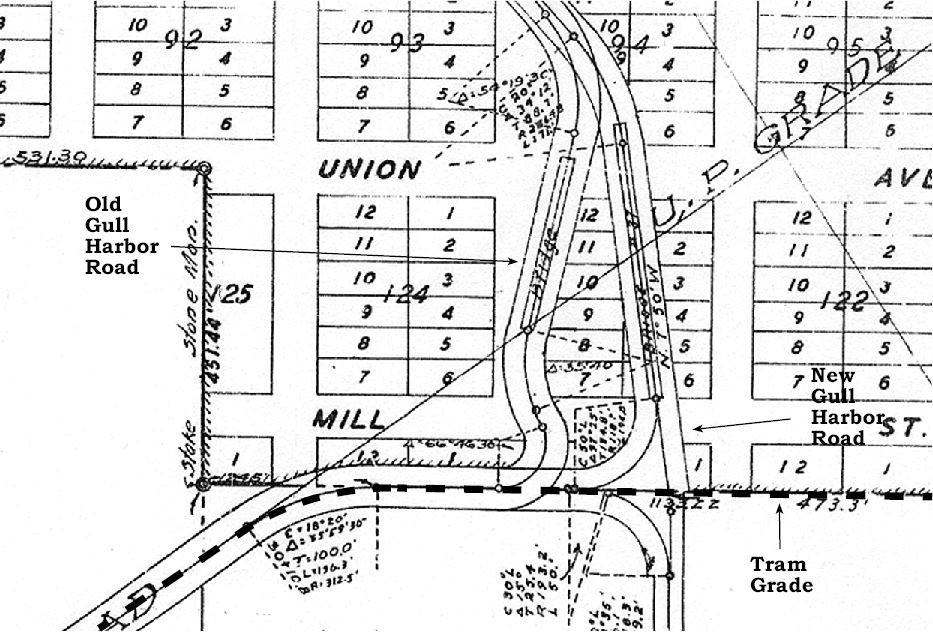
properties was transported to Ellis Cove. Timber deeds for the various parcels identified in the March 1, 1881 document (mentioned above) indicate that Woodard Creek was dammed, possibly in several locations. This allowed logs to be transported north by water, to the tram railway. Permission to erect dams was granted in the Crowell H. Sylvester Donation Claim18 and farther south, in Section 17 of Township 18 North, Range 1 West.19

By the latter part of 1884, the timber tributary to the tram railway had mostly been exhausted. A September 17, 1884 document20 reveals that, for $10,000, the Port Blakely Mill Company sold (back) to Ike Ellis the rights and title to everything related to a logging business near

Olympia. Those assets consisted of 44 oxen, three horses, sundry tools, buildings at the camp, roads, bridges, dam, railroad, two cars at the camp and one car at Mud Bay, two wagons, supplies at camp and in warehouse at Olympia, feed, hay, chains, ropes, harness, and saddles.
Ellis planned to use these assets for construction of his Olympia & Mt. Rainier Railroad. Ellis also acquired recycled track material from a tram railroad previously built by James McIntosh and subsequently owned by the Tacoma Mill Company.21 That tram had been used to transport timber between Hewitt Lake and Tumwater. The terminal for McIntosh’s tram had been on Budd Inlet, immediately north of the place where later, the first Olympia Brewery building would be constructed.22
Ellis began buying timberland, water impoundment rights, and rights-ofway for this new endeavor in 1883. On April 10, he was granted the right to flood most of the southeast quarter of Section 18, Township 18 North, Range 1 West.23 Water would be impounded by a dam across a creek south of that property. A right-of-way for a part of his logging railroad was also granted through the south part of the designated parcel; it was supposed to reach a landing on the east side of the resulting pond. That grade would have travelled north from the area immediately northeast of today’s Pacific Avenue interchange with Interstate 5.
In March 1884, Ellis bought Samuel Ward’s wharf and warehouse near downtown Olympia.24 Those properties were described in a deed as “abutting on Fourth Street [now Avenue] immediately on the east side of the channel, by the drawbridge and adjoining the wharf and warehouse of the said Ellis on the west.” One right-of-way needed for construction of the Olympia & Mt. Rainier Railroad was leased May 28, 1884.25 It allowed passage through several blocks of Swan’s Addition to Olympia. Two additional leases were signed that same month. The first allowed the railroad to cross the William Ayers Donation Claim; the second permitted passage over what became, in 1889, Wilson’s Addition to Olympia. After grading of the right-of-way began, it became necessary to lease another small parcel in Swan’s Addition; thus, the northeast portion of Block 59 was secured in September 1884.26
The May 28, 1884 lease reveals that Ellis was not the first logger to use this newly secured right-of-way. In that document, James Pattison granted Ellis “a right-of-way upon and over that certain skid logging road built by Dan Varner, so far as the same runs over and through Blocks 51, 52 and 71 of Swan’s Addition to the Town of Olympia.” Previously, Varner had used the skid road to harvest timber in the Moxlie Donation Claim. Figure 5 displays the timberland controlled by Ellis and presumed to have been harvested via the Olympia & Mt. Rainier Railroad. Figure 6 shows the terminal of the line on the East Waterway as it appeared on an 1894 map of Olympia.

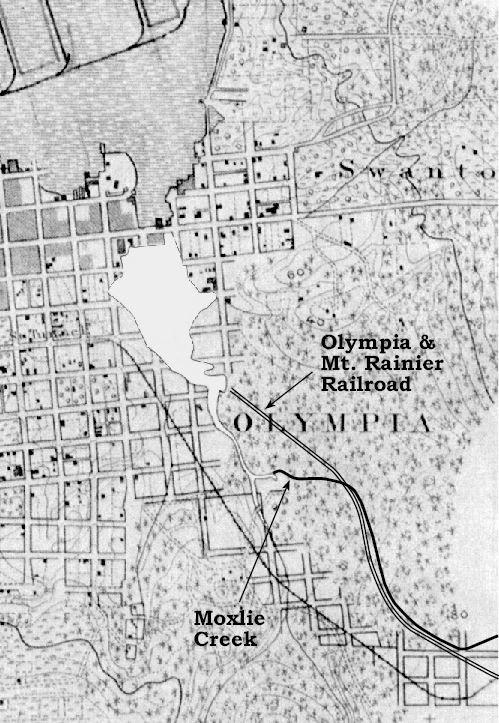
The Ayers interview mentioned above suggests that initially, the Olympia & Mt. Rainier Railroad was powered by oxen: “And he (Ellis) had this logging railroad that he built out to Chambers Lake and he ran the railroad right down into the lake. Then he floated the logs onto the cars and then pulled them out by oxen power and took them to the top of the hill and turned the cars loose down to the Union dump and [then] they hauled them
back up [to Chamber’s Lake].” This form of power is confirmed by an article in the June 12, 1885 Tacoma News: “I. Ellis, putting logs into the bay at Olympia, operates with cars drawn by mules and running on iron rails. He works about 50 men, and puts in some 55,000 feet daily. Logs come to Tacoma Mill Company.” Mules continued to be used at Chambers Lake, as reported in the May 17, 1889 Washington Standard: “Quite a smashup occurred on Ellis’ logging railroad on Thursday. A
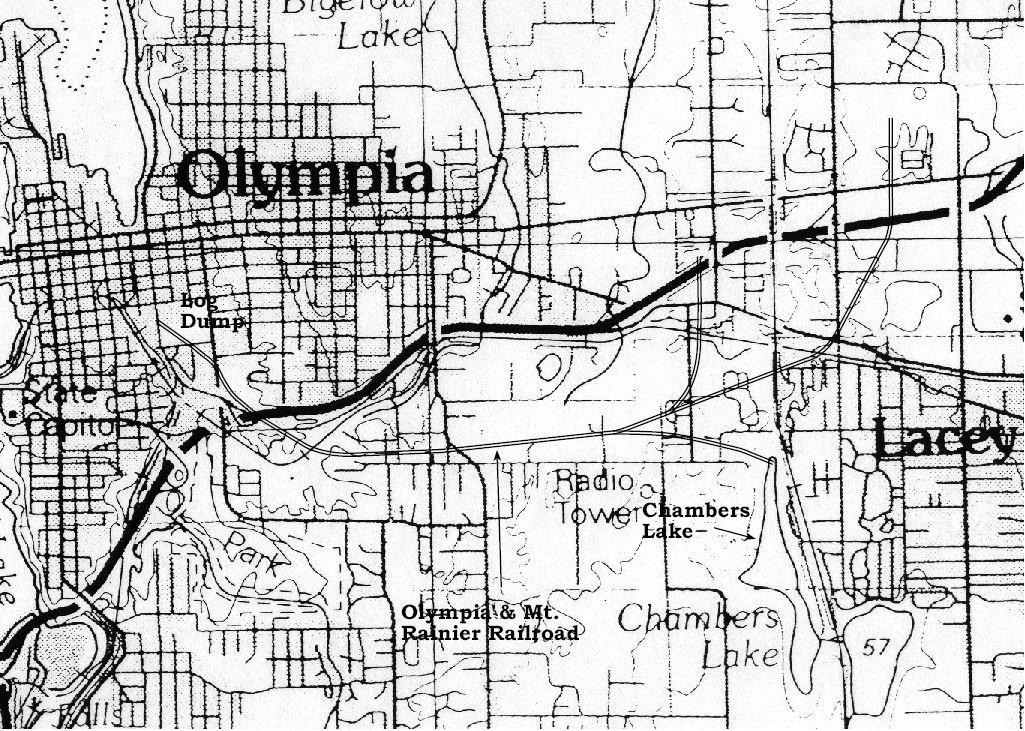
mule team was hauling two cars up the incline at Chambers Lake, when a coupling broke and back went the cars down into the lake, logs and all. One car was badly smashed and both sank in ten feet of water. The cars were fished out yesterday. No one was hurt.”
The January 30, 1885 edition of the Washington Standard suggests that the railroad used a locomotive on at least some part of the line. “Mr. Ellis’ railway logging camp is in full working order and every day the ears of our citizens are greeted by the blast from the locomotive whistle as the train comes thundering down the declivity to the mouth of Moxley’s [sic] Creek, where, at high tide, the logs are rolled into the water.” However, no other source has been found to confirm the use of such an engine. The 1888 edition of The Official Railway List lists the Olympia & Mt. Rainier Railroad with three miles of 97-inch gauge track. Poor’s Manual of Railroads, Editions of 1889 and 1890, note that the railroad was operating eight miles of track using steel rails with a gauge of eight feet, one inch. It owned four log cars. A locomotive was not mentioned in any of those publications.
Logging Railroads of the West, by Kramer Adams, reports that the Olympia & Mt. Rainier Railroad operated until 1890. That year, the Northern Pacific Railroad constructed its line into Olympia. That right-of-way intersected the logging railroad at a significantly different grade. Ellis may not have had enough unharvested timber remaining
to justify the cost of building a bridge over the new Northern Pacific line.
Just when George H. Foster constructed his second Thurston County railroad, in the region of Percival Creek, is unclear. Figure 8 is the author’s map presenting important features of that enterprise. The railroad deposited logs at a dump on the west side of Budd Inlet. Its southern terminal was at a place known as Camp #2, in the northeast quarter of the southeast quarter of Section 28, Township 18 North, Range 2 West. Of possible significance is the fact that Ben Turner had also contemplated logging in this area, for he had acquired that same property in 1881.27 Foster was actively logging along Percival Creek on January 30, 1883, when he bought timber rights in the southwest quarter of Section 28.
In a deed recorded July 14, 1883, Foster transferred a large portfolio of assets to Charles Hanson, the owner of the Tacoma Mill Company. Included were Foster’s Logging Camp #1 (at Bush Prairie) and Camp #2, which was also the place where logs were transferred to the Percival Creek line from a skid road belonging to Foster. The railroad was on the west side of Percival Creek, while the skid road terminated opposite the camp, on the east side of the creek. At Camp #2 were two rail cars for log transport and 2,000 ties. In addition, there were “1,000,000 board feet of saw logs in the water at Budd Inlet, opposite
Olympia.”28 A restatement of several of these items is found in a document dated May 8, 1884.29 It mentions that Camp #2 was the location of “One draft locomotive now used by Foster in the transport of logs and timber from lands owned by Charles Hanson to the west shore of Budd Inlet.”
Another deed dated April 14, 1884 gives an account of the Percival Creek railroad about a year after the Tacoma Mill Company bought it. Therein, Charles Hanson sold a large number of personal properties and selected
railroad spurs to his mill company. The list included timber on the northeast and southwest quarters, and the west half of the southeast quarter of the previously-mentioned Section 28. The document also describes the Percival Creek line: “Also another railroad commencing at Budd Inlet between Tumwater and Olympia, south of Percival Creek, running west from there one and three sevenths miles, and terminating in the northeast quarter of the southeast quarter of Section 28, T 18 N, R 2 W; also the graded roadbed of a length of about four seventh-miles

for a projected railroad not yet built but intended as an extension of the above railroad. Also, about one and one quarter-miles of skid road formerly used by George Foster in conjunction with his logging camp situated in Section 28.”30
It must be noted that page 115 of Gone, But Not Forgotten, Abandoned Railroads of Thurston County, Washington states that a right-of-way located at 2549 Chapparel Drive was part of the mainline of a railroad that existed after 1885, the Black Lake & Sherman Valley Railroad. However, further examination of the data suggests that, in fact, the right-of-way found there was the graded, but not yet operating branch of Foster’s Percival Creek railroad mentioned above, in the April 14, 1884 deed.
At some time in 1885, the Percival Creek railroad was no longer being used. Benjamin B. Turner made a successful attempt to wrest control of that right-of-way from the Tacoma Mill Company. Turner wished to use this pre-existing grade as part of his Black Lake & Sherman Valley Railroad, which soon would reach as far west as Black Lake.
George H. Foster and the Tacoma Mill Company, all of his logging camps and timberlands and timber in this vicinity. The price paid is said to be $12,000. This includes several hundred acres of timber along the railroad [the Olympia & Chehalis Valley Railroad], his camp, oxen and all logging fixtures, the four logging cars, his old camp and timberland east of Tumwater, and the Warbass tract. The new firm will enlarge and continue the business as formerly. Two new logging cars will be added to the railroad line, making six in all, when it is expected that fifty thousand feet of logs will be brought out daily to tidewater.”
The February 4, 1882 Olympia Transcript narrates: “The Olympia and Tenino road brings out cars one and a half miles, from the Deschutes River to the road, and then runs to this bay, five miles further. This is the wellknown camp belonging to George Foster, who also employs a large force in cutting and barking the logs, and a number of teams in hauling the logs to the line of the railroad. Mr. Foster has a large body of fine timber in the region of his camp, sufficient to keep him for several years employed in the business.” By April 1884, the railroad had reached as far east as Section 17 of Township 17 North, Range 1 West.
Perhaps Foster’s biggest venture into railroad logging took place at Bush Prairie, south of Tumwater. The August 6, 1881 Olympia Transcript reports: “Large Sale of Timber and Logging Camps-We understand that Benjamin Turner sold on Thursday, to
the southwest quarter of the northwest quarter of Section 18, Township 17 North, Range 1 West.31 The railroad probably had been abandoned by 1890, for there is no evidence that it was converted to standard-gauge that year, when the Port Townsend Southern Railroad took over the Olympia & Chehalis Valley Railroad and widened its gauge.
By sometime in 1885, the Tacoma Mill Company had finished logging the tim-
ber obtained from George H. Foster, near Percival Creek. The railroad grade used in that operation was no longer used and its ownership had apparently reverted to the various prior grantors of the right-of-way. Benjamin Turner was able to secure that rightof-way and integrate it into his Black Lake & Sherman Valley Railroad which, later that year, was completed as far as the eastern shore of Black Lake. Turner was also able to lease the Tacoma Mill Company’s log dump at Percival Point. His long-range plan was to extend his line to the Sherman Valley, southwest of Black Lake. But
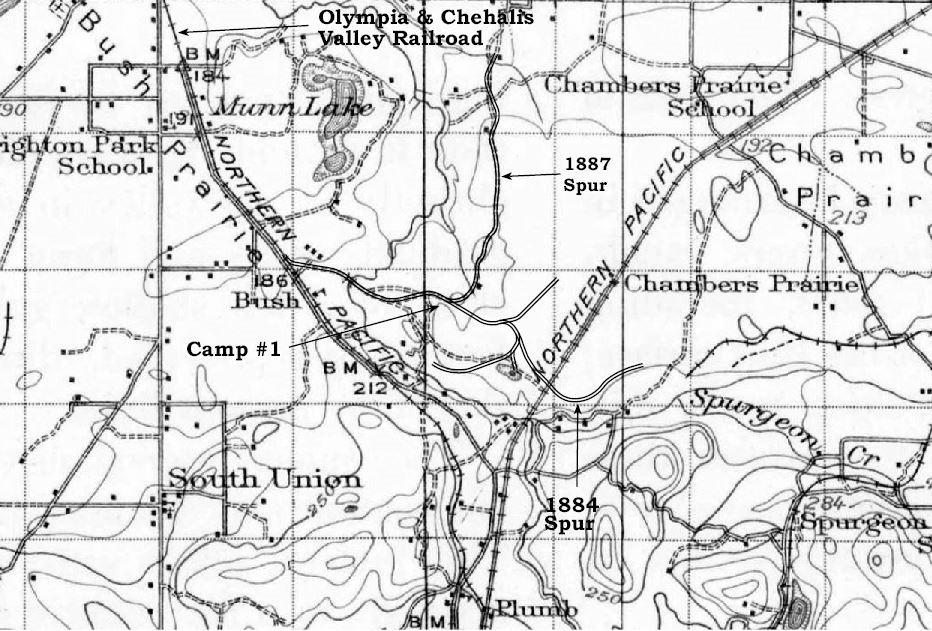
under Turner’s ownership, the enterprise failed to turn a profit and the railroad never was lengthened beyond the lake.
Early on, Turner experienced a cashflow crisis. In a series of mortgages in January, July, and September 1886, he mortgaged the entire logging operation, including the railroad between Percival Cove and Black Lake, to the Port Blakely Mill Company.32 Those documents describe the Black Lake & Sherman Valley Railroad as 3.25 miles long, beginning at Budd Inlet in Section 22, Township 18, Range 2 West, and terminating on the shore of Black Lake, in Section 31. Lot 4 of Section 31 is the only part of Section 31 situated on the east side of Black Lake; therefore, it is the likely site of that terminal. Turner had purchased that lot from the Northern Pacific Railroad Land Company in September 1883.33 However, Turner (without permission) built his railroad across Lots 1, 2 and 3 of Section 32 (to which he did not hold title) in order to reach the terminal at the lake.34
This resulted in several lawsuits which continued to be adjudicated even after Turner lost control of the Black Lake & Sherman Valley Railroad. The first was heard on July 5, 1887.35 Therein, the heirs of Samuel Scott claimed that they were the rightful owners of Lot 4 in Section 31, and Lots 1, 2 and 3 in Section 32, all of which were in Township 18 North, Range 2 West. The declaration went on to say that “on or about the first day of May 1885 [the defendant] has constructed, main-
tained and operated upon and over the [above-described property] . . . his said railroad, and built . . . [three] rollways for logs . . . at points distant from one another–two on the west side of the said lake and one on the north end thereof–and many skid roads and logging roads, radiating from said rollways . . . That on 8 September 1886, these plaintiffs commenced . . . an action against said defendant to recover from him damages for his cutting . . . of such fir timber . . . in Lots 1, 2 and 3 and the south half of the southwest quarter of Section 31, all in Township 18 North, of Range 2 West [also several other parcels of property] . . . on the 18th day of June 1887, these plaintiffs obtained judgment in said action against said defendant for $1,000 damages . . . which judgment is still in force, unreversed, and unsatisfied.”
The judgement handed down in that court case resulted in an order restraining Turner from cutting any timber whatsoever at Black Lake. John DeTiere was appointed receiver for the assets of Turner. He submitted a final receiver’s report March 31, 1888. DeTiere noted that on July 1, 1887, he had made a contract with the Port Blakely Mill Company such that the mill company was allowed to carry out logging on Turner properties, to which it still held a mortgage. In addition, DeTiere leased the logging railroad to the mill company. The right-of-way was “out of repair” and required $713 to put it “in fair running order.”36
After the receiver completed his work in March 1888, several details still re-
quired attention. On April 24, 1888, Turner deeded to William Renton (who owned the Port Blakely Mill Company) the real estate previously mortgaged to the mill company, as well as the 3.25mile railroad.37 A floating camp was included in the deed. It was located on a scow moored in Black Lake. The sale price was $1, suggesting that the document was made for the purpose of clarifying ownership of the properties. To further reinforce this, Turner changed the name of the Black Lake & Sherman Valley Railroad, while incorporating it (for the first time) on May 28, 1888. The new name was the Olympia, Black River, and Chehalis Railroad Company. The line was then formally sold to Renton on June 1, 1888.38 Renton sent Sol Simpson to Olympia to look after Port Blakely interests while logging operations at Black Lake were winding down. Logging to the Salt Chuck, by Peter J. Replinger, reports that Simpson wrote to Renton on June 3, 1888, “Took possession of Black Lake Camp and railroad on June 1st . Put J. A. Cole in charge. Track very rough. Will take two to three hundred dollars to put in shape to operate the balance of the season.” Replinger notes that on September 19, 1888, Simpson notified Renton that he had
“Discharged men in camp on lake on the 16th.” Thereafter, the railroad was removed.
Further insight into the location of this railroad, southwest of the log chute and a right-of-way leased from S. W. Percival, is found in a lease dated June 18, 1885.39 Therein, Turner obtained permission from Charles Billings allowing him to use a right-ofway over the Alanson Warren Donation Claim, in Sections 22 and 27 of Township 18 North, Range 2 West.

The lease specifies that Turner’s track was “to be constructed on or about the same line occupied by the road heretofore constructed over the said tract of land by George H. Foster.”
South of the Warren Donation Claim, and Foster’s abandoned logging camp #2, one questions why Turner chose not to follow Foster’s pre-existing grade in the western half of Section 28. That right-of-way had been used to harvest Tacoma Mill Company timber. In theory, it should have been possible to extend it to Black Lake, if title to it could be secured. But, south of Foster’s old camp, Turner decided to build his railroad over more challenging terrain. Perhaps he had the notion that later, a branch line could be constructed to timberland he controlled in Section 33, and farther south, in Section 4, Township 17 North, Range 2 West. Figure 10 illustrates some of the parcels controlled by Turner. The path of a possible skid road reaching Section 33 is visible.
A petition obtained from Thurston County Roads and Transportation Services helps locate Turner’s grade farther southwest, in the south-central part of Section 28. Continuing study of this document has led to a revised opinion about the location of the Black Lake & Sherman Valley Railroad in this vicinity. The updated configuration differs from the one presented in Gone, But Not Forgotten, Abandoned Railroads of Thurston County, Washington. The petition was a request by W. L. Sapp and is dated October 7, 1898. Sapp and some of his neighbors
desired to have a survey made for a road approximately 0.75-mile long “commencing at a point on the Sapp Road near the Benj. Turner R. Road trestle and running north on half section line [of Section 28], to intersect the county road direct from Tumwater to Mud Bay.”
The survey was never made and that road was not built, but it seems clear that the “point on the Sapp Road near the Benj. Turner R. Road trestle” must have been immediately east of the intersection between Sapp Road SW and R. W. Johnson Boulevard. That area is precisely on the center line of Section 28. Sometime after 1969, Sapp Road was rebuilt in that locale. Now, it passes directly over a ravine, crossing the ravine on an area of fill. A presentday artist’s conception shows the trestle as it would have appeared from the modern position of Sapp Road. The view is somewhat east of true north.
Although the identity of the earliest locomotive to operate over Turner’s railroad remains unknown, a later one, Engine #3, still exists and has achieved relative fame. Built in 1870 by Smith & Porter for the Northern Pacific Railroad, it was designated #302 on that line. Turner acquired it in February 1886 and renumbered it as #3. With the rest of Turner’s assets, it became the property of the Port Blakely Mill Company in 1888, where it continued to operate as #3. The accompanying drawing shows the locomotive as it would have appeared while operating on Turner’s railroad.
In 1895, the engine was sold to Polson Brothers Logging Company of Hoquiam, Washington, where it was renumbered as #1 and was in service until 1928. Subsequently, it was repurchased by the Northern Pacific Railroad and restored to its original specifications. Re-named the “Minnetonka,” the engine was exhibited at the 1939 World’s Fair in New York City. Today it is on display at the Lake Superior Museum of Transportation in Duluth, Minnesota.
The year 1890 marked the end of an era when individual businessmen like Foster, Ellis, Brown, and Turner could build a personal logging empire in Thurston County. The local timber industry continued to thrive after that time. But as the 19th Century came to an end, the logging industry was controlled more and more by large corporate interests.
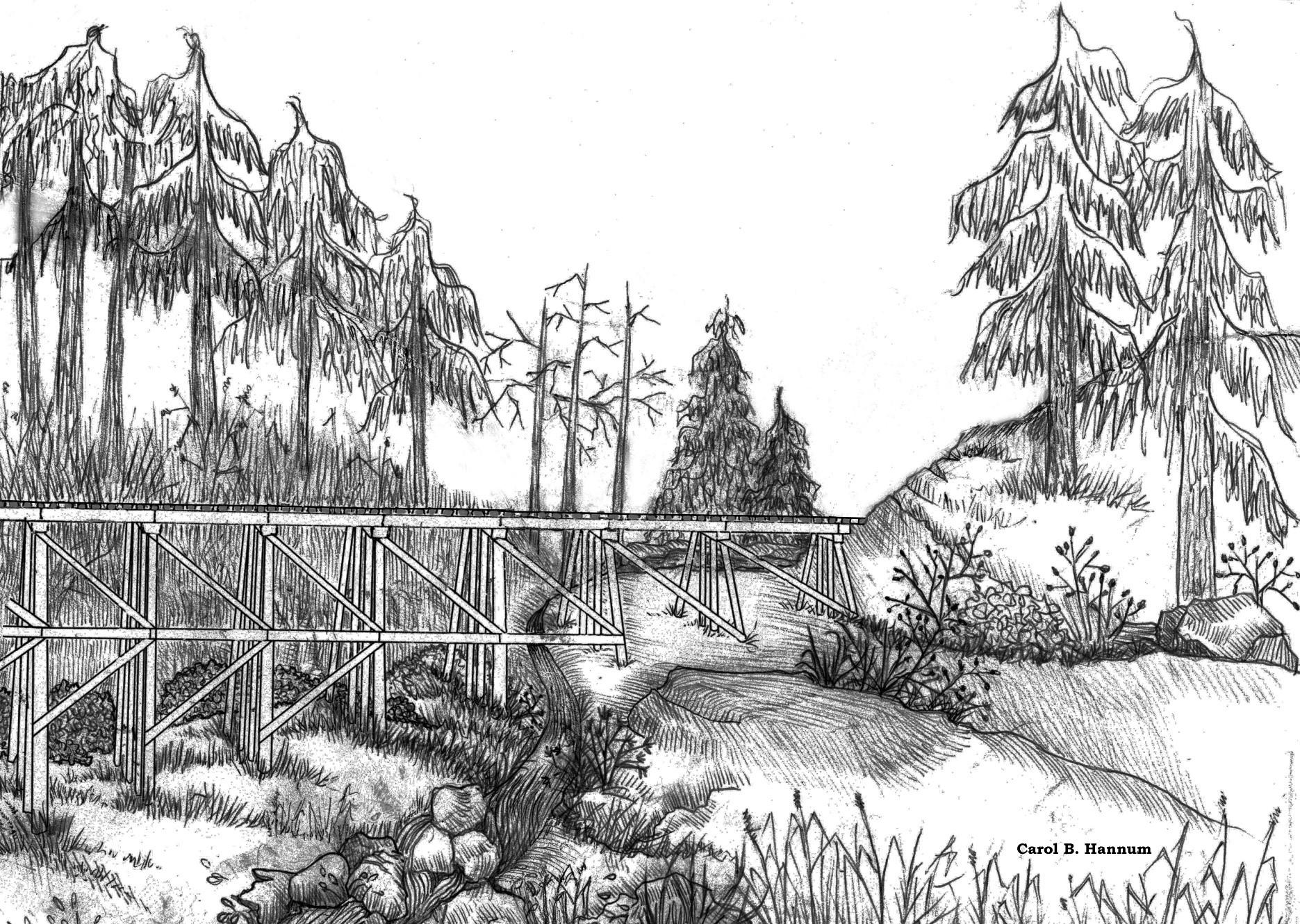
accessed April 2, 2021).
4 George Foster, United States Census, 1880, FamilySearch, Washington > Thurs ton > Olympia >ED15 > image 25 of 34.
Black Lake & Sherman Valley Railroad engine #3, which later was renamed the “Minnetonka.” Artist’s concept by Carol B. Hannum.

1 George Foster, United States Census, 1860, FamilySearch, Massachusetts > Middlesex > Ward 1 Lowell > image 150 of 157.
2 George H. Foster, 1870, U.S. Federal Census, Thurston County, U.S. Census Bureau, Washington State Archives, Digital Archives (http:// digitalarchives.wa.gov : accessed February 22, 2020).
3 George Henry Foster, Thurston County Pioneers, document #54, Washington Rural Heritage, Washington State Library (https://www. washingtonruralheritage.org/digital/ collection/pioneers/id/276/rec/119 :
5 George Foster, Thurston County Auditor, Death Records, 1891-1907, Washington State Archives, Digital Archives (http://digitala rchives.wa.gov : accessed November 2, 2020).
6 Isaac Chase “Ike” Ellis, Find A Grave (https://www.findagrave.com/memo rial/91360904/isaac-chase-ellis : accessed April 4, 2021).
7 A Volume of Memoirs and Genealogy of Representative Citizens of the City of Seattle and County of King, Washington (New York and Chicago: Lewis Publishing Company, 1903), page 476.
8 Amos Brown, 1870, U.S. Federal Census, King County, U.S. Census Bureau, Washington State Archives, Digital Archives (http://digitalar chives.wa.gov : accessed February 24, 2020).
9 Amos Brown, 1880, Thurston County Census, Thurston County Territorial Auditor, Washington State Archives,
Digital Archives (http://digital archives.wa.gov : accessed April 2, 2021).
10 Death Certificate of Benjamin B. Turner; death date January 22, 1923. Department of Health, Death Certificates, July 1, 1907 – December 31, 1995, Washington State Archives, Digital Archives (http://digitalarchives .wa.gov : accessed February 24, 2020).
11 Woodard Bay Natural Resources Conservation Area Management Plan (Olympia: Washington State Department of Natural Resources, 2002), page 90.
12 Thurston County District Court Case #2858, July 1889. All following Thurston County records can be found at the Southwest Regional Branch, Washington State Archives, Olympia, Washington.
13 Thurston County, Washington, General Index Grantee, 1854-1889.
14 Thurston County Miscellaneous Book 1, page 178.
15 Thurston County Miscellaneous Book 1, page 179.
16 Thurston County Miscellaneous Book 1, pages 287 and 289.
17 South Bay logging bridge with mule team, photograph C1986.8.7, courtesy of Washington State Historical Society, Tacoma, Washington.
18 Thurston County Miscellaneous Book 1, page 184.
19 Thurston County Miscellaneous Book 1, page 191.
20 Thurston County Miscellaneous Book 1, page 616.
21 Thurston County Miscellaneous Book 1, page 601.
22 James S. Hannum, Gone, But Not Forgotten, Abandoned Railroads of Thurston County, Washington (Olympia: Hannum House Publications, 2012), page 281.
23 Thurston County Miscellaneous Book 1, page 385.
24 Thurston County Deed Book 14, page 496.
25 Thurston County Miscellaneous Book 1, page 557.
26 Hannum, page 281.
27 Thurston County Deed Book 13, page 30.
28 Thurston County Miscellaneous Book 1, page 405.
29 Thurston County Miscellaneous Book 1, page 552.
30 Thurston County Deed Book 14, pages 740-748.
31 Thurston County Miscellaneous Book 1, page 405.
32 Thurston County Mortgage Book D, pages 108, 219, and 263; Chattel Mortgage Book 2, pages 262 and 349.
33 Thurston County Deed Book 14, page 483.
34 Thurston County, Second Judicial District Court, Case #2657.
35 Thurston County, Second Judicial District Court, Case #2657.
36 Hannum, page 114.
37 Thurston County Deed Book 16, page 491.
The rebuilt engine “Minnetonka” as it was readied for display in the 1939 World’s Fair in New York City. Photograph courtesy of Wikimedia Commons.
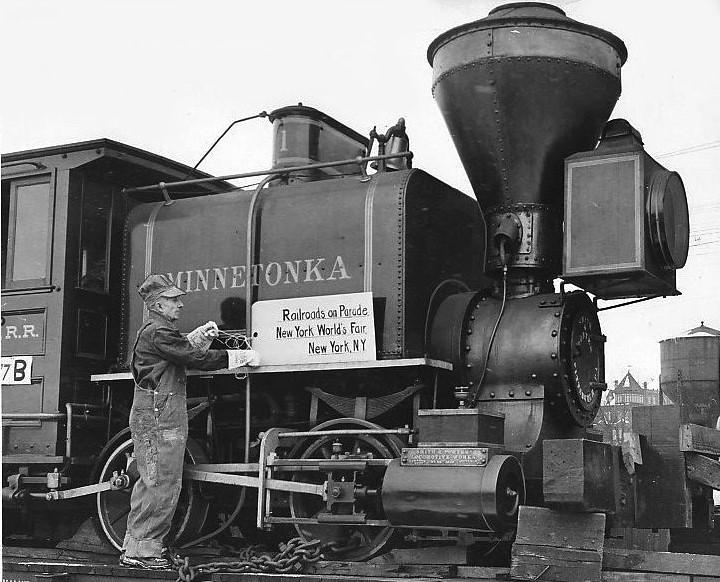
38 Thurston County Deed Book 16, page 491.
39 Thurston County Deed Book 15, page 258.
Dr. Hannum is a retired physician and surgeon who spent his early years in Michigan. He arrived in western Washington in 1971 as a member of the U.S. Public Health Service. Railroad history has been a life-long interest, and he has written several books on the subject.
In early 1854, the Territory of Washington was still in its infancy. The new government’s officials had a multitude of issues to contend with and a host of plans to make. What they did not foresee, however, was that someone would embezzle a good chunk of the territorial budget, a “grade-A financial catastrophe . . . which would have rated front-page crime headlines today.”1
The crime itself was fairly well documented but almost entirely unreported at the time. Twenty years later, the affair resurfaced with hardly any documentation, yet it spawned headlines across the country with bizarre twists. Familiar people cropped up in strange places or were mistaken for others. “Facts” were warped, exaggerated, or fabricated out of whole cloth, whether by the embezzler himself, an accomplice, or reporters in their frenzy for a sensational story. And to this day, the affair remains shrouded in a web of lies, interwoven with a few threads of truth.
Henry V. Colter (often spelled Coulter), a man plagued by dishonesty,
Captain John G. Parker, Olympia, no date. University of Washington Libraries, Special Collections Division: McMicken Family Photograph Collection. PH Coll 498.38.
John G. Parker Jr., an honorable man and the biggest loser in the Colter affair

Charles Mason, first secretary of Washington Territory. Charles H. Mason, 1848-1859, State Library Photograph Collection, Washington State Archives, Digital Archives (http://www.digital archives.wa.gov : accessed May 6, 2021).
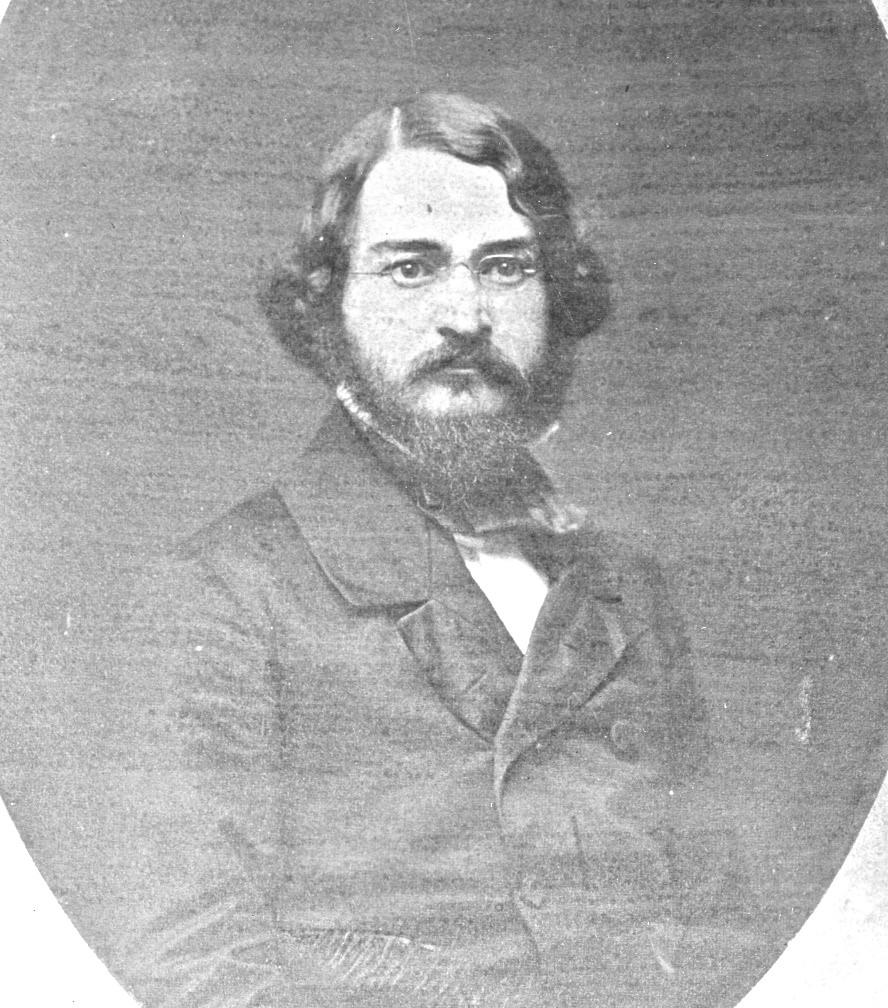
W. W. Knowlton and José Ramirez, products of a fevered imagination or part of an elaborate ruse
Charles H. Mason, the first secretary of the fledgling Washington Territory
Edward Horatio Parker, John G.’s brother, often confused with him in news articles
George W. Dent, a California merchant, and brother-in-law of U.S. President Ulysses S. Grant
Charles W. Jessup, an innocent bystander caught up in a nasty business
On March 2, 1853, the United States government formally created the Washington Territory out of the northern portion of the Oregon Territory. Isaac Ingalls Stevens arrived in Olympia on November 25 to take on the role of governor, and quickly proclaimed Olympia as the capital city. He also called for a Territorial Legislature to be elected on January 30, 1854; the elected officials were to assemble on February 27.2
Along with the new governor came $20,000 from the U.S. Congress in the form of bank drafts. The funds were meant to cover the costs associated with establishing a new government: territorial seals, blank books for record-keeping, services of a prosecuting attorney, and a small salary ($3 per day) and travel expenses for each legislator, among other things. In 1853, $20,000 was a good deal of money (although it equates to not even $600,000 in today’s economy, a paltry sum for funding an entire government).
Charles H. Mason was appointed as the territory’s first secretary, and as such had charge of the finances and much else. One of his first duties was
finding a place in which to convene the legislature. Olympia at that time consisted of a very few buildings and a great many tree stumps. One of Olympia’s earliest pioneers, Edmund Sylvester, had constructed a frame building in 1852; by the time Mason was searching for a meeting place, Sylvester had added a second story to his building. The ground floor was occupied by the firm of Parker Colter & Company, but the second story was available, and thus became the home of the first territorial legislature.3

Henry V. Colter was born in New Jersey around 1831, to Henry and Margaret McDonald Colter.4 In 1850, young Colter headed to the San Francisco area and went to work for James Vantine, a family acquaintance. Through Vantine, he met the Dent brothers their sister Julia was married to Ulysses S. Grant and entered their employ in the small town of Knights Ferry, California.5 In 1853, bankrolled by the firm of Mills & Vantine, Colter and his business partner Wright (first name unknown) travelled north to establish a small mercantile business in Olympia.6 (The Dent brothers, James Vantine, and Luther Mills seem to have had a fairly fluid business arrangement, partnering and re-partnering over time.)
express service. In 1851, Parker was ordered west to San Francisco (his brother Edward Horatio Parker was already an independent merchant in that city). Two years later, Parker was commissioned by Mills & Vantine “to proceed to Olympia W.T. for the purpose of closing up or settling the affairs of a trading post in which the firm had some interest, carried on by Wright & Coulter [sic] of Olympia. . . . Having reason to believe that Wright & Coulter were not necessarily insolvent, but that they had been making money, [Parker] availed himself of the alternative of buying out the interest of his employers on time, and the firm of Parker Coulter & Co. succeeded Wright & Coulter.”7
Meanwhile, in Michigan, John G. Parker Jr. (born in Ontario in 1829) was employed by Gregory’s Express Company, which offered a coast-to-coast
Top: current map of downtown Olympia, north is at top. The star denotes the approximate location of the Parker and Colter building in the center of the block between today’s Olympia Center and the Olympia Transit Center. Map courtesy of the Olympia Historical Society and Bigelow House Museum.

Above: advertisement from Olympia’s Pioneer and Democrat newspaper, promoting Parker & Colter’s Express business. Parker & Colter connected with Adams & Company Express, a business organized in California in 1850 and serving the Pacific Coast. Pioneer and Democrat, March 4, 1854, page 3.

By January 1854, Parker had paid off Mills & Vantine, and so the firm of Parker Colter & Co. dropped the “& Co.” and became simply Parker & Colter.8
The U.S. mails were reliably unreliable in those days, often taking weeks or even months to travel between farflung post offices in the West. So in addition to their general mercantile business, Parker and Colter started an express service to Portland and California, carrying packages and mail, and offering banking services. Colter usually made the horseback ride between Olympia and Portland, while Parker tended to the mercantile.9 This express business, although much faster and more dependable than the official mail, became their downfall.
On March 2, 1854, Territorial Secretary Charles Mason asked John Parker to advance him $1,500 for legislative expenses; Parker did so. On March 7, Mason handed Parker two U.S. Treasury bank drafts worth $3,000 each (representing 30% of the federal appropriation). The express office did not have enough cash on hand to fulfill Mason’s request, so Colter headed south on horseback to cash the drafts in Portland.10 The round trip should have taken only a few days. But Colter never returned.
As the days passed, Parker and Mason must have run through a gamut of escalating emotions: slight concern, wor-
ry, consternation, panic. Did Colter meet with an accident on the way to or from Portland? Was he robbed? Was he dead? Where was the money? Where was the money??
With no answers forthcoming, and no Colter forthcoming either, Parker finally ran a notice in Olympia’s Pioneer andDemocrat newspaper:
“I take occasion to inform the public, that the continued absence of Henry Colter, my partner, cannot at present be satisfactorily explained. But, thanking my friends for their patronage heretofore, I crave their further indulgence by asking a suspension of opinion, until the facts are definitely ascertained, of which the public will be at once apprised. I stand ready, however, to satisfy all who may be interested in the security and certainty of our express. John G. Parker, Jr. of Parker & Colter’s Express.”11
That carefully worded notice was the first, and practically only, public reference to the crime. But no doubt the rumor mill was grinding away in Olympia.
by JOHN G. PARKER, Jr.”12
Parker was already out the $1,500 which he had advanced Mason. Feeling morally responsible for his partner’s absence and the missing money, Parker dredged up another $2,500 toward the budget deficit. This cleaned out Parker’s savings, and left Mason to voluntarily assume the remaining $2,000 of the $6,000 missing.
A week later, Parker had accepted that Colter was not going to return, so he ran a second item in the paper:
“NOTICE. The co-partnership heretofore existing under the style of PARKER & COLTER, is this day dissolved. All demands against the firm will please be presented for payment. The business will hereafter be conducted
The territorial legislators studied the affair and were “well satisfied that no blame can in any respect be attributed to the Secretary of the territory, as the mode adopted for the transmission to this place of funds from Portland, Oregon territory, was the one used by prudent business men in this section of country, and one in which all, up to the period of this unfortunate affair, had the fullest confidence.”13 Having recognized the financial hardship imposed upon Mason, the legislators sent a memorial to the U.S. Congress, asking that body to “reimburse the fund appropriated to defray the pay and mileage of members of the legislative assembly and the contingent expenses thereof, the amount fraudulently taken from said fund by Henry V. Colter, and to relieve Charles H. Mason, secretary of said Territory, from his liability therefor, two thousand dollars . . .”14
In October 1854, Elisha Whittlesey, First Comptroller of the U.S. Treasury, advised Mason by letter that the U.S. Congress had approved appropriation of the $2,000.15
Parker later wrote that Colter had gone off with “[Parker’s] and other peoples money; and [I] ‘got broke’ in the express business.”16 For a time, though, he continued the mercantile business, having built a new store on the corner of Main and Third Streets in late 1854.17 But the loss of the $4,000 dogged Parker and his store. So he began operating steamboats on the Sound his father and uncles had long been steamboat captains in eastern Canada and even obtained a short-term U.S. mail contract, trying to bolster his income.
In January 1856, the territorial legislators sent another memorial to the U.S. Congress, at last addressing Parker’s financial hardship:
“Your memorialists would further respectfully represent, that the diversion of the four thousand dollars from the legitimate business of the said Parker to pay the said secretary, has compelled the said Parker to abandon his occupation, that of merchandizing, and has operated as a serious hardship about him and upon his creditors residing in San Francisco. Your memorialists, witnessing with much satisfaction the appropriation of two thousand dollars on the 4th of August, 1854, to relieve the said secretary of his responsibility, and to reimburse the said fund, believe that the interests of the said Parker and of his creditors should, with those of Mr. Secretary Mason, receive an equal degree of
consideration at the hands of the government; and they deem it but just that an appropriation should be made of the sum of four thousand dollars to reimburse the said John G. Parker, jr. [sic], for the loss he has sustained, which your memorialists respectfully pray your honorable body to grant.”18
The memorial made its way through the House of Representatives and was referred to the Committee of Claims.19 However, there is no evidence that the bill made it out of committee. In a letter from 1874, Parker’s father wrote that he thought his son’s claim on the money was “good . . . with interest”,20 implying that the government had never authorized any financial relief for Parker. (The $4,000 amounts to nearly $117,000 in today’s money.)
Parker married Jane Logan Hays in April 1854. In 1856, they removed to San Francisco, where Parker joined his brother Horatio in the wholesale grocery business. After ten years in California, the family returned to Olympia, where Parker once again took up steamboating and became a respected captain on the waters of Puget Sound.21
Precisely what Colter did with the money is still a matter of conjecture, and will be discussed later in this article. But he briefly returned to the East Coast in early 1855.
In a letter from John Parker Sr. (father
of Colter’s partner, John Parker Jr.) to another son, Parker Sr. mentions a visit from Colter in 1855: “Coulter lost the money & came to N.Y. & I took down his statement in writing.”22
Colter’s visit to the East was corroborated by a statement made by his sister, Isabella Colter Petrie Fleming: “Some seven or eight months after [the embezzlement], in February, 1855, my brother returned to New York, in the steamship North Star. . . . He remained with me only four weeks . . .”23
Why was Colter not arrested for embezzlement at this time? True, he had disappeared for a while, but in early 1855, his whereabouts were known. Did he convince Parker Sr. of his innocence, and did that story make its way back to Olympia and preclude any prosecution? Did the Washington Territory officials decide to bury the entire problem, especially since they had been at least partially reimbursed by the federal government? One also needs to consider the laws in effect in Washington Territory at the time of Colter’s crime. The statute of limitations for most crimes (murder being the primary exception) was one year: the prosecution of Colter would have had to commence within one year of the embezzlement.24 Perhaps Colter just bided his time until he was safe from prosecution.
Colter’s sister Isabella Fleming claimed her brother “feared being ar-
rested by his partner, Mr. Parker”; nevertheless Colter returned to California in early 1855, his trip apparently financed by Fleming’s husband.25 On April 16, Colter enlisted in Company E, 1st Regiment, US Dragoons at San Francisco. Company E spent some time in California and then transferred to Fort Walla Walla. Colter suffered a back injury and also contracted catarrh (a chronic inflammation of the throat and sinuses); these problems were severe enough to warrant his honorable discharge at Walla Walla on October 19, 1857.26
Colter must not have had the stolen money at this time otherwise, why enlist in the army, which was a rather dismal occupation? If Colter had the funds, he should have been living high on the hog.
Colter disappeared from records for a few years, but in 1860, he was listed in the San Francisco city directory: he was living in a boarding house, and working as a merchant with his old boss, James Vantine.27 So even though Colter had absconded with or otherwise “lost” the territorial money, Vantine thought well enough of him to employ him again.
On April 7, 1862, Colter re-entered the army in Company K, 4th Regiment, California Infantry. His unit served at various locations in the state, and his enlistment expired on April 7, 1865. Two months later, he re-enlisted at Angel Island, serving in Company D, 2nd Regiment, US Artillery. He left the
One of Henry Colter’s records from a veterans home, detailing his service and domestic history. United States National Homes for Disabled Volunteer Soldiers, 18661938 (https://familysearch.org : accessed May 25, 2021).
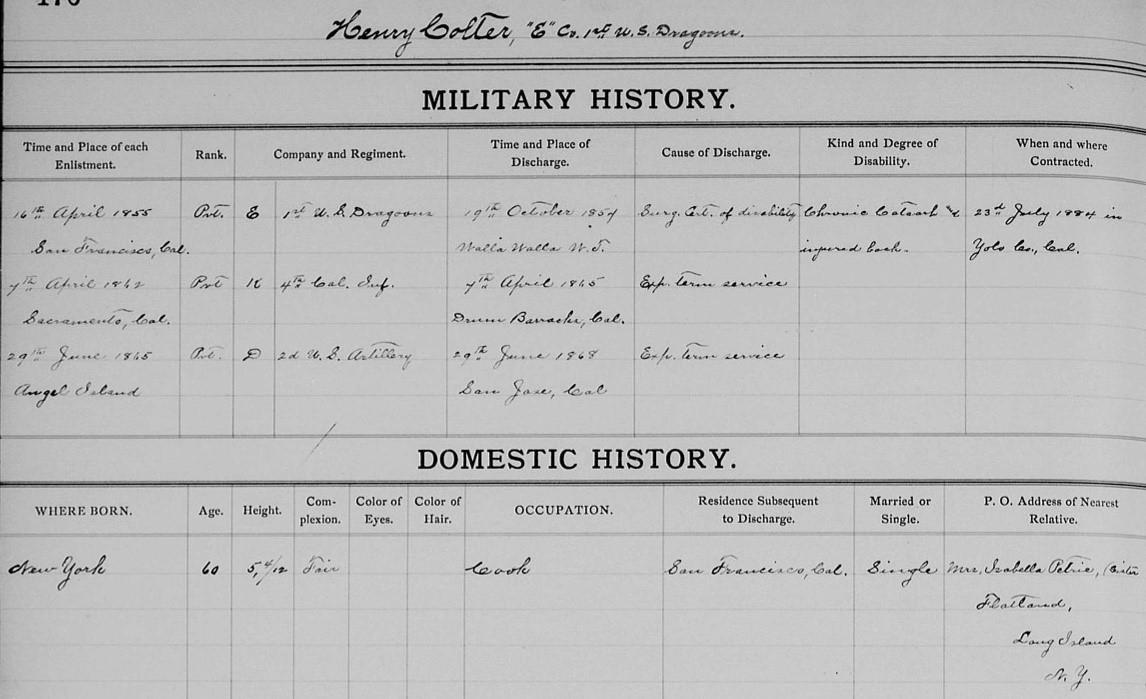
army for good at San Jose on June 29, 1868, having always been a private.28
Military records give us a glimpse of Colter’s physical appearance: just 5 feet 4 inches tall, with gray eyes and a fair complexion. He was a Roman Catholic. And after his military career, he disappeared again.
Twenty years after Colter’s original disappearance from Olympia, an intriguing advertisement appeared in the San Francisco Chronicle:
“INFORMATION WANTED IMMEDIATELY of the whereabouts of HENRY COULTER, or COLTER, who, in the years 1850-51-52, was with the firm of Dent, Vantine & Co., at Knight’s Ferry, and afterwards at Olympia, W.T. In 1854 he was defrauded out of a large sum of money by a party who fled to South America. This man died recently, leaving an estate valued at over $200,000 entirely to Colter, by way of reparation. Please address ATTORNEY, this office.”29
Thus began a sensation that put Colter in headlines across the country.
“
The Chronicle ran a lengthy story on July 27, 1874, explaining the circumstances behind the unusual notice asking for Colter’s whereabouts. According to this article, Colter and a young man named Charles Jessup were friends, and Colter “entrusted to his [Jessup’s] care a package containing $4,800, to be delivered to Mr. Parker [Edward Horatio Parker] of the house in this city. Jessup, instead of delivering the money, suffered himself to be led into temptation, and fled with it to South America, where all trace of him was lost. . . . It now turns out that Jessup, on the strength of his stolen capital, accumulated an immense fortune in South America, and some years ago returned to his native place, Westfield, Mass., to spend the remainder of his days. A short time ago he died, and left to his former friend whom he robbed, or his heirs, if there be any, a clean $200,000. Among his papers after his death was found the following certificate:
‘In June, 1854, I received from Mr. Colter, of the firm of Parker & Colter, a package of gold coin, $4,800, more or less, which I pledged my word and honor to transmit or deliver to E. H. Parker, San Francisco, and whatever injury has resulted I alone am guilty and bear the blame. Colter could not help himself at the time. I write this to exonerate my friend and relieve my conscience on a sick bed. CHAS. JESSUP, of Westfield, Mass.’
have him find Mr. Colter, or his heirs, if he be dead, and with that view he inserted the advertisement referred to. A Chronicle man on Saturday sought out the attorney and asked what luck he had had.
“The administrators of Mr. Jessup’s estate sent a statement of the case to a lawyer of this city, with directions to
“
‘Well,’ he said, laughingly, ‘I can find traces of any quantity of Henry Colters. They are just now as thick as blackberries.’ ”30
Several days later, another advertisement appeared in the Chronicle: “To Whom It May Concern. Cosmopolitan Hotel, July 30th. Editor Chronicle ‘I was dead, but am alive again. I was lost, but am found.’ Any one interested in the affair published in your issue of Monday will find me here every evening. Letters on business must be addressed to W. W. Knowlton, care of A. L. Bancroft & Co. (Original) HENRY COLTER, Of Knight’s Ferry and Olympia.”31
And so the “original” Henry Colter appeared to claim his legacy, a good deal of celebrity, and no doubt any number of free lunches. He had been doing chores for a meager living at a hotel in Watsonville, California.32
But after the news of Colter’s great luck was trumpeted in papers across the country, the story began to fall apart.
Colter’s alleged attorney, W. W. Knowlton, reportedly embarked on a twoweek business trip to Oregon. “In the meantime he told Colter to prepare
proofs of his identity. Colter got his former partner, J. G. [Parker] to come down from Olympia, and collected other evidence, and is fully prepared to show that he is the Henry Colter advertised for. Nothing has been heard from the lawyer since his departure for Oregon, and Colter is becoming uneasy, and [Parker] anxious to return to Olympia. Colter is at present working for Bancroft to earn money for current expenses.”33
Parker had indeed come down to San Francisco to investigate Colter’s story34 and no doubt recognized his old business partner. Colter’s former employer and now U.S. customs official, George W. Dent, also identified Colter as the genuine article.35 But if Knowlton actually was an attorney in San Francisco, why would he have asked messages to be sent to his care first at the Chronicle office and then at Bancroft’s (well-known bookseller and stationer)? Why not direct messages straight to his law office? Another news item provided an answer.
On August 26, Olympia’s Puget Sound Daily Courier ran the following: “From a private letter from San Francisco, dated August 19th, which may be relied upon, we learn the following: ‘The Colter bubble has burst. Nothing in it. A sensational fraud invented by Colter, and an accomplice for what reason has not yet been determined. There is no such person as W. W. Knowlton, who as attorney, started the advertisements to learn the whereabouts of Henry Colter.’ ”36 Indeed, a
search through San Francisco business directories of the time period found no attorneys named Knowlton.
Perhaps Knowlton or at least the surname was a thread of truth. In late August, a New York reporter located and interviewed a Stephen Knowlton, merchant, of Brooklyn, New York. This Knowlton claimed to have financed Colter’s first trip to California: “When the California gold fever
George Wrenshall Dent, former employer of Colter, who identified Colter in 1874. Andy Hall, “Sale of Government Property,” Dead Confederates, A Civil War Era Blog (https://deadcon federates.com/2019/02/27/sale-ofgovernment-property/ : accessed May 20, 2021).

broke out, I fitted him out and sent him there to seek his fortune. He fell in with a relative of mine, a Mr. Vantine, who was then in business with John and Louis Dent. General Grant married their sister. I had advanced the firm several thousands of dollars, and through my letter of recommendation young Colter was quickly placed in a good way to make money.”37 A search of genealogical records verified that Stephen Knowlton’s sister Eliza was indeed married to James Vantine. So another slim thread of truth was interwoven among the vast amount of misinformation otherwise contained in the news.
Just a few days later, the San Francisco Bulletin noted, “. . . an Olympia gentleman, who was specially interested in the original financial transaction, wrote to friends in New York for particulars of the affair. An investigation led to the discovery that no person of the name mentioned [Jessup] in connection with Colter’s good luck had died in the locality mentioned and left a fortune. Since then the Olympia gentleman has visited [San Francisco] and made some inquiries about the matter. He is satisfied that the story is without foundation.”38 The Olympia gentleman was obviously John G. Parker, who very probably wrote the private letter quoted previously. Olympia’s Washington Standard published the same information, adding, “The most amusing feature of the affair is the wild goose-chase it has put [Parker] to, in looking [Colter] up to share his good fortune.”39
Meantime, other newspapers were still touting Colter’s good luck, and attributing many civic-minded activities to the fortunate man. The Watsonville paper claimed Colter was “going to donate water works to Watsonville, erect a public fountain, grade some of the streets and advance money for the completion of the narrow gauge railroad to that place.”40 The same paper also upped the legacy to $500,000.
But now that Knowlton’s existence had been debunked (a role likely played by an accomplice of Colter’s) and the whole story was in danger of collapsing, another “credible” source had to be conjured up to keep the yarn alive. Enter one José Ramirez of Bolivia.
In early September, the San Francisco Bulletin offered a recap of the affair and introduced Ramirez. “Senor Remirez says that he is the bearer of the papers from Bolivia, South America, to this country, conveying information of the windfall, and, being also an administrator of the estate involved, he feels that his statements should be respected. His narrative is about like this: In 1854 a man named Jessup was intrusted [sic] with $4,800, for firms in Olympia, by Henry Colter of this city. Jessup did not reach Olympia from the fact that he took a different direction and engaged in business in Chile and Peru. Fortune smiled on Jessup and he became wealthy. Some months since he left his business to visit his boyhood home in Westfield, Mass., where his father
owns and manages a paper factory. During his trip he contracted the fever at Panama and soon after arriving there he died. The company in which Jessup was interested prospered in a remarkable degree. One of the parties, who possessed Jessup’s secret of Colter’s money, died soon after Jessup. The latter willed property to the value of $218,700 to Henry Colter of Olympia, formerly of Knight’s Ferry, or his heirs. Senor Remirez says that the public have been misled by the fact that there are four persons who claim to be the Henry Colter. But the Henry Colter identified by George W. Dent of the Custom-house in this city, and who is now engaged at the book-store of A. L. Bancroft & Co., is the person the administrators are after. A Mr. Knowlton was delegated to investigate the matter by Colter’s New York friends, and he went to Washington Territory and thence to Chile, to inquire into the state of affairs. But Knowlton has no authority from the administrators.”41
The day after the above item appeared, the San Francisco Chronicle printed a further communiqué from Ramirez: “To the Editor of the Chronicle Sir: There have been so many things said about Colter’s windfall, both pro and con, in the papers that I deem it my duty (as bearer of the dispatch from Chile, via New York, containing the intelligence) to state that the property left to one Henry Colter is situated in Chile and Bolivia, and not in Massachusetts, and the man who bequeathed it to him was a partner in the company when Jessup invested
his money. Jessup died twenty years ago in Westfield, Mass., and his father manufactured paper there then and may be there still. I have kept quietly observing the various actions of certain parties in this matter, and am convinced that the Colter who turned up in Watsonville is the bona fide being. There is an injunction of secrecy on the whole affair for the present. Nought can be done in the matter until next May, 1875, when the whole business will be settled by the company, and if Colter can live through it till then will take a trip himself to his estate. No power of attorney or second person can act in this case, but Colter must act for himself, and until next May he will hear no more from me. This is the truth of the whole matter. Parties have been knocking at the wrong door for information. The thing had to be worked up in this way. Mr. Dent’s identification of Colter was sufficient for Mr. Knowlton, who left for South America three weeks ago. JOSE RAMIREZ, Of Bolivia and New York.”42
José Ramirez was probably as fictional as W. W. Knowlton.
Legal representatives of Charles Jessup firmly stated their position in a letter to the Weekly Alta California.
“Editors Alta: We have seen an article in the newspapers credited to the San Francisco papers, stating, with considerable particularity, a story that one Henry Coulter, then of Olympia, W.T., in 1854, was defrauded of a large sum of money by one Charles Jessup, who
fled with the money to South America, there accumulated an immense fortune, and, some years ago, returned to Westfield, Mass., where he died a short time since and left to said Coulter, or his heirs, two hundred thousand dollars; and also containing a certificate, purporting to have been signed by said Jessup, found among his papers after his death, in which he acknowledged his guilt, and that the Administrators of Mr. Jessup’s estate had sent a statement of the case to a lawyer in San Francisco, with directions to have him find Mr. Coulter, or his heirs.
“Charles A. Jessup died in Westfield, Mass., in September, 1872, leaving an estate of about $200,000 [over $4 million today], and a last will, which was duly probated and is on file in the Probate office in Springfield, Mass., by which the bulk of his property was bequeathed to his widow and children and about $40,000 to various benevolent objects and societies, and in which the subscribers were named as executors, and they were appointed by the Probate Court as executors and have acted in that capacity. Soon after Mr. Jessup’s death we opened and examined a private box belonging to him, which contained his bonds, notes and other valuable papers, and which was kept in the vault of the First National Bank of Westfield for safe keeping, and also examined all his papers, left at his private dwelling house, and no such certificate as the one referred to in said article, signed by Charles Jessup, nor any other paper or memorandum referring to Henry Coulter, or
to any similar transaction to the one mentioned in the said pretended certificate, either directly or indirectly, was then or has since been found among his papers, or anywhere else, and we have every reason to believe that no such genuine certificate ever existed.
“Nor has any paper referring to said Coulter in any respect, either directly or indirectly, been found, seen or heard of by us, nor does said will contain any legacy, or make any reference, to said Coulter.
“Mr. Charles A. Jessup was born in Richmond, Mass., in 1806, and resided in Westfield, Mass., for more than fifty years prior to his death, and was never in his lifetime, to the knowledge of his acquaintances or relatives, in Olympia, California, South America or any place on the Pacific Coast. Mr. Jessup, at his death and for many years prior thereto, had held important offices of trust in various institutions in Westfield, Massachusetts, and had always maintained an unblemished reputation for honesty and integrity, and his property, as all his acquaintances in Westfield know, was acquired in legitimate business pursuits in said Westfield.
“We never sent any statement of the pretended case to any lawyer, or any other person, in San Francisco or anywhere else, with directions to find Mr. Coulter or his heirs, or take any action whatever in regard to any such matter.
“The statements contained in said article, so far as they refer to us personally, and to our connection with said estate of said Jessup, we know to be utterly without foundation, and so far as they relate to or concern said Jessup or his estate, we have reason to believe them equally so.
“Milton B. Whitney, Henry Hooker. “Commonwealth of Massachusetts, county of Hampden ss: Subscribed and sworn to this sixteenth day of September, A. D. 1874, before me. “J. R. Dunbar, Justice of the Peace.”43
The executors’ claims about the case are corroborated by the elder Jessup’s obituary and will.44 Charles A. Jessup had never visited the Pacific Coast, and his will never mentioned Colter at all.
But Colter had an immediate comeback to that missive: “Editors Alta: I have read the article ‘Colter-Jessup case’ relating to me, and I wish to inform you and the public that it is a case of mistaken identity, so far as Charles A. Jessup is concerned. The person implicated in my affair was the son of the above-named, and his son’s name was Charles W. Jessup. He was Clerk in the San Francisco Post Office in 1853-4, and there are responsible parties in this city who remember the trip he took to South America, in the ship Spitfire, and, furthermore, his aged mother informed my lawyer that he arrived home (in Westfield, Mass.) in ill health and died that same year. “The money which C. W. Jessup left in
South America with some company is the legacy in question, and has no connection whatever with the $200,000 that the old man Jessup left when he died.
“Yours truly, Henry Colter
“San Francisco, September 28th , 1874”45
Charles W. Jessup’s employment with the San Francisco Post Office, and his journey on the ship Spitfire, could not be verified in any modern records. But Colter’s identification of Jessup was corroborated by another source in a lengthy article appearing in papers a few days later.
Perhaps the most intriguing and believable version of the Colter-Jessup affair was published in the Weekly Alta California on October 3, 1874. Headlined “Colter’s Fortune,” the article contained an interview with Walter Arey,46 son of Captain John W. Arey who commanded the ship Spitfire:47
“In the spring of 1854 probably in the latter part of March the ship Spitfire, Captain Arey, father of our informant, was lying on Broadway wharf [at San Francisco] ready to sail for Callao [Peru].48 The morning she was to sail, a small boat, containing a man, hauled alongside. The passenger, in complete disguise loose coat, turned up at the collar, slouched hat, green goggles, etc. went aboard and asked to be taken as a passenger for
Callao. The favor was granted, and the price of fifty dollars paid. Shortly after the ship weighed anchor and put to sea. After the pilot left the deck the strange passenger took off his disguise, and gave the name of Philip Colter. There was a mysterious and moody air about him which the crew and officers were at a loss to divine. Often he was seen to lean upon the rail and go into a brown study for hours at a time. The Captain more than once observed that there was something wrong with the stranger. When the vessel was nearing Callao, Colter approached the only other passenger on board, one Charles Jessup, who had taken passage to return home via Cape Horn, and desired to make of him a confidant. He assured Jessup that he (Colter) had
at the first favorable opportunity take it back to the owner, E. H. Parker, a former partner of Colter. It seems the latter [Colter] had been attending the firm’s business at Olympia, and having accumulated the amount, had come down here with the intention of returning it; but the temptation to steal it overcame him when he saw the good opportunity of escaping on the Spitfire. The Captain would not take the money, and at length Jessup was induced to become custodian, and vouched for its safe return. At Callao Colter again assumed his disguise and went ashore. The ship continued to Pisco, where she lay for a long time. There Jessup went ashore and whiled away the monotonous time. One day while associated with some of the cattle drovers who were accustomed to supply ships visiting that port with meat, he was induced by them to visit
“THEIR RANCH IN THE MOUNTAINS.
“GROSSLY WRONGED parties in San Francisco by cheating them out of $5000, and he, becoming consciencestricken, had concluded to return it; he wished Jessup to induce Captain Arey to take charge of the money, and
This he willingly did, having plenty of time and no engagement to prevent. After having been away several days, and no one on board knowing of his whereabouts, word was brought from Pisco that one of the men from the Spitfire was lying at the point of death in a hut up the mountains, a hundred miles from the port. Captain Arey immediately concluded it was Jessup, and engaged a number of peons to go after and bring him back. This they faithfully performed, having slung a hammock between two mules, in which the invalid might travel with comparative comfort. When he reached shipboard once again, Dr. Flinn, of the United States Navy, and

who was then in that port, waited on Jessup, and gave it as his opinion that
“THE PATIENT HAD BEEN POISONED. The latter admitted that at the ranch he had indulged freely with his hosts, one day, and from that occasion remembered but little, save the fact that he had been robbed of the money which he had carried about his waist, a canvas belt made in the ship. He gradually recovered and wrote to his father in Westfield, Massachusetts, stating his weak condition and asking that he be permitted to return to New York by way of Panama, Capt. Arey in a postscript corroborating the contents. In the course of a few weeks a letter and money order were received and Jessup taking passage in one of the small coasters running from Pisco was taken to Panama and thence went to New York and home to Westfield. . . the gentleman furnishing these details is satisfied they are true, as he was an observer of most of the events that are related.”49
the embezzlement, someone with detailed knowledge of the affair would come forward.
If Walter Arey’s story is to be believed, and it certainly sounds more credible than other versions, then Charles Jessup was not at fault for the loss of the money. He was robbed by unknown persons outside of Pisco, Peru. Jessup eventually boarded the steam-
Arey’s recollection has the ring of truth about it. He had nothing to gain by making up such an elaborate story. And Colter probably never imagined that twenty years after
Map of South America. Stars show Pisco, Callao, and Aspinwall. Detail from 1881 map of Central and South America, H. H. Hardesty, Historical Hand-Atlas Illustrated (Chicago: H. H. Hardesty & Co., 1881). Image courtesy of the Library of Congress.
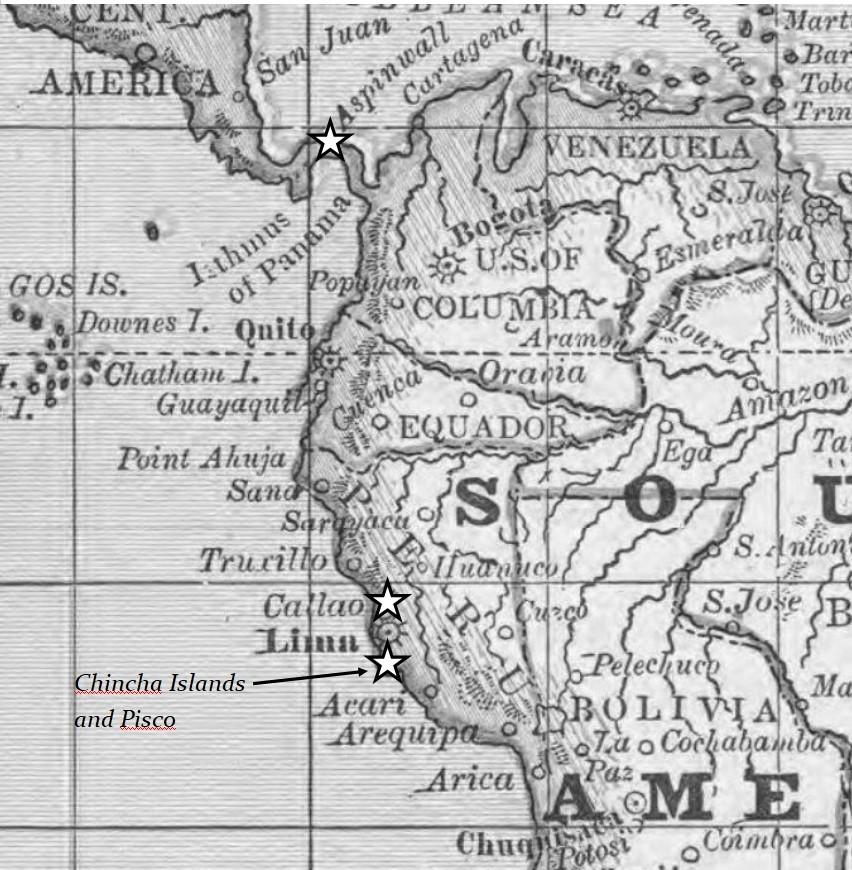
Passenger list of North Star, from Aspinwall to New York. Charles Jessup’s name is second on this page. New York Passenger Lists, 1820-1891, 20 Sep 1854-16 Oct 1854 NARA, FamilySearch (https://familysearch.org : accessed June 2, 2021).
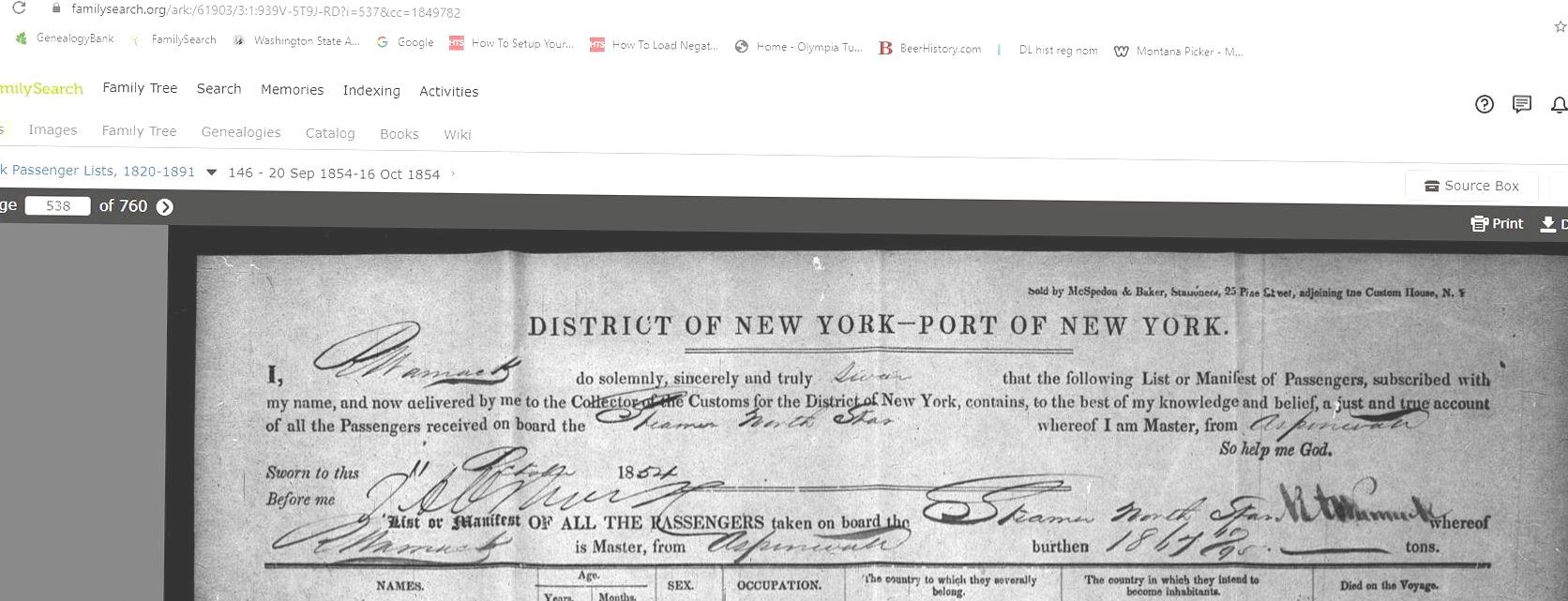
er North Star in Aspinwall, leaving that city on October 3, and arriving in New York on October 11. Jessup’s name appeared on the North Star’s passenger list for that trip,50 dovetailing with Arey’s story.
Jessup reached his family home in Massachusetts on October 14, 1854, but died just nine days later,51 either from Panama fever as his obituary stated, or from aftereffects of his poisoning in Pisco. He had had no time to invest any money or make a fortune in South America.
In 1872, the elder Jessup died and left an estate of around $200,000 to his widow and surviving children. This legacy seems to be the basis for Colter’s story, who manipulated the “facts” to his advantage in the news.
Shortly after Arey’s interview was published, Colter responded with an open letter to Mr. Arey. (Underlining, added by this author, refers to points of discussion appearing later.)
“San Francisco, October 7th, 1874 “Editors Alta: Please publish the following ‘open letter’ to Mr. Arey, your contributor:
“Mr. Arey: I have been patiently awaiting your explanation, or answer, to my open letter published a few days ago. I wish again to remind you that I have not yet sunk so low that I allow you or any other man to carelessly stab my fair name, and then slink away. You made a statement in which you said, ‘a temptation to steal a sum of money overcame me.’ This has gone before the public and my friends, and tends
to injure me. After a rest for twentyone years, it is a damning charge to receive from a stranger. ‘Tis also false that I ever swindled any one out of money in San Francisco in 1854; the funds were our own, and the adventure to South America was the affair of Parker & Colter only. Another thing, I was always called Philip, or ‘Phil,’ by my own partner and friends. You must ‘come out and explain.’ You will learn this time that ashes always fly back in the face of him who throws them. I purpose giving this $218,000 story to the public in a book soon.
“Henry Colter, “Of the firm of Parker & Colter, Puget Sound.”52
Did the funds belong to Parker & Colter? No. Colter carried the governmental bank drafts to Portland in order to exchange them for cash, which should have then been returned to Secretary Charles Mason to fund the new territorial government. If the funds had belonged to the express business, there would have been no hubbub over the “loss” and Mason and Parker certainly would have never allowed the territorial legislature to ask Congress to reimburse them for the stolen money.
Olympia, Parker wrote: “Coulter [sic] went off with $8000 of [my] and other peoples money; and [I] ‘got broke’ in the express business.”
Was the sum in question really $218,000? This number grew in the telling; what started as $200,000 became $218,000, then $250,000, and finally $500,000.
Did Colter write a book about the affair? There is no evidence that Colter ever wrote such a book.
In an interview with the San Francisco Chronicle, Colter again made several statements that can be easily debunked:
Was the South American adventure known to the firm of Parker & Colter? No. Directly after the embezzlement, Parker was unable to explain Colter’s absence and ran a newspaper ad stating so. And as late as 1878, when reminiscing about early days in
“In answer to a question as to how he first lost the money, Colter said that he was bringing the cash ($4,800), which belonged to his firm, or rather it belonged to other parties, though they were responsible for it, from Olympia to this city [San Francisco]. Jessup and another man, whose name he has forgotten, left in the same steamer with him from Olympia the steamer America. On the way Colter says he got on a terrible spree, and while in that condition gave the money to Jessup to carry to Mr. Parker. He did this, he says, because he did not want Parker to see him in the state he was in. Jessup ran away with the money, and that was the last he ever heard of him until last Wednesday. Ruined in pocket and bankrupt in character, Colter turned over the business to his partner and became a wanderer. He
did a little of everything. He became a guide for a surveying party of the Pacific Railway, guiding at one time General McClellan (then Captain McClellan), who was running a survey across the Continent. He then enlisted in the army and served thirteen years, being discharged last from the Second Artillery. Previous to this, however, he had worked for Dent, Vantine & Co. at Knight’s Ferry. Dent was brother-inlaw of ‘that man up there,’ said Mr. Colter, pointing to a picture of President Grant on the wall, ‘and I’ve seen him many a time at Knight’s Ferry. He was Captain Grant then, and could drink more whisky than I could, and that’s saying a good deal, I can tell you, for in those days I could punish a fearful quantity.’
“Since his discharge from the army he has done a little of everything. He worked as a copyist for a year or more for A. L. Bancroft & Co. Then he went off to the country and worked in hotels and acted as a porter in stores, blacked boots when he couldn’t get anything else to do; in fact, flitted about unprofitably and irresponsibly. He will remain here until Mr. Knowlton’s return, and will then start for the East to look after the property.”53
Did Colter abscond with $4,800?
No. Colter left Olympia with $6,000 in bank drafts.
order to cash them, then return to Olympia with the cash for Secretary Mason. If Colter had cashed the drafts in Portland as planned, he should have then immediately returned to Olympia. If instead he headed south after getting cash in Portland, he was already embroiled in embezzlement.
Did Colter and Jessup leave Olympia on the steamer America? There is no evidence that Charles Jessup ever resided in or even visited Olympia. Furthermore, the steamer America never came to Olympia at all it traveled strictly between San Francisco and Portland, its northernmost port of call.54 Neither Colter nor Jessup were listed as passengers on any southbound America trips (Portland to San Francisco) that March or April. If Jessup was on the America, he would have had no reason to travel under an alias. Finally, Colter left Olympia on horseback, headed to Portland, so never got on any ship leaving Olympia.
Did Colter turn over the business to his partner Parker? Once Colter absconded with the funds in March 1854, he never returned to Olympia, and had no further communication with Parker until, that is, in 1874 when the $200,000 legacy story hit the news. From March 1854 on, Parker dealt with the mercantile and express business by himself.
Was Colter carrying the cash from Olympia to San Francisco? No. Colter’s task on leaving Olympia was to carry the bank drafts to Portland in
Did Colter act as a guide for Captain McClellan as he claimed? In 1853, Isaac Stevens tasked U.S. Army Captain George B. McClellan with survey-
ing a route across the Cascade Mountains. After reaching Vancouver, Washington Territory, in June 1853, and after much procrastination, McClellan finally set out on his task on July 18. After some desultory exploration, McClellan returned to Vancouver in November. He then decamped to Olympia to report to Stevens, who sent him on another unwelcome trip from Steilacoom to Snoqualmie Pass. McClellan remained in the mountains from December 23 to January 18, 1854. He spent the rest of January and February living with Edward Jay Allen in a cabin on today’s Cooper Point. Stevens finally “fired” McClellan, who gratefully and speedily left Washington Territory on March 7, 1854, never to return.55
In early 1853, Colter was in California, and quite likely did not arrive in Olympia until shortly before he and partner Wright ran their first ad in the Columbian on March 19, 1853. During the remainder of 1853 and early 1854, Colter was probably traveling back and forth to Portland and California on his and Parker’s mercantile and express business. When would he have had time to act as a scout for McClellan? Additionally, there is no evidence that Colter knew anything about scouting, or had ever even been across the Cascades. And finally, Colter left Olympia on his fateful business trip to Portland on the same day that McClellan was sent back east. Thus, McClellan was not even in Washington Territory when Colter claimed to have worked for him.
Did Colter know Ulysses S. Grant at Knights Ferry? Grant was posted to Fort Vancouver in 1852; in 1853, he was transferred to Fort Humboldt on the northern coast of California. Although serving at Fort Humboldt for only six months or so, Grant took occasional trips to visit his brothers-inlaw at Knights Ferry, which was about 277 miles as the crow flies from Fort Humboldt.56 Grant may well have met Colter on one or more of those trips, if Colter had been visiting Knights Ferry at the same time.
Based on all of the possible stories put forth in 1874, I believe that the Colter timeline is probably as follows:
•In March 1854, Colter leaves Olympia on horseback with $6,000 in bank drafts, heading to Portland to have them cashed.
•Colter decides to steal the money.
•After arriving in Portland, Colter takes the next available ship south to San Francisco; no doubt he uses an alias so his true name doesn’t appear on the ship’s passenger list. He either cashes the drafts in Portland, or cashes them on arrival in San Francisco.
•On March 22, Colter boards the Spitfire and proceeds south to Callao.
•Colter repents of his crime, and asks fellow passenger Charles Jessup to intercede with the ship’s captain to take the stolen funds back to San Francisco.
•Captain Arey refuses to take respon-
sibility for the money, so Jessup agrees to return it.
•Colter leaves the ship in Callao and returns to the U.S.
•Jessup is robbed of the money, returns to Massachusetts, and dies shortly thereafter.
•The stolen money is never “invested” and turned into a fortune, as Colter claims.
•In early 1855, Colter visits the East Coast, then returns to California, and continues his life there as detailed above.
•In 1874, for whatever reason, Colter spins his web of lies, inserting tiny threads of truth: Knowlton, who was an actual acquaintance of Colter’s, showed up as a fictional attorney; a $200,000 legacy was left by the elder Jessup in Massachusetts, not the young Jessup in California; Edward Horatio Parker was often confused with his brother John G. Parker in news stories, but was a legitimate merchant in San Francisco; Colter did serve in the U.S. Army, but only on the West Coast, so was not in any Civil War battles.
After the legacy stories died down in late 1874, Colter vanished from the newspapers. But in September 1879, a small item appeared in the Carson [Nevada] Daily Appeal: “Henry Colter, an alleged insane man was arrested yesterday. He is very quiet and tractable. Up to within a short time ago he was working on some of the ranches in the valley.”57
Could this be our Colter? A follow-up article provided a clue.
“Henry Colter, an insane man of whom nobody knows anything here, was yesterday examined before Judge King, by Drs. White and Smart, and declared a fit subject for treatment at the ayslum [sic]. He will be taken to Stockton tonight by Sheriff Hill. The type of Colter’s insanity is a very mild one, and judging from his talk, it was produced by an intent study of spiritualism. When asked how old he is, he replied, 1800 years. He speaks of having been in heaven, and in a crude manner describes it as a beautiful place. He stated to an APPEAL reporter that he is sorry that he was driven out; and when asked why he was banished, he stated that the angels wanted him to live a while longer. He said that he was a soldier under Grant, and had been in the army 100 years. The greater part of the time his mind is absorbed with a trunk supposed to contain $200,000, which he believes some one is trying to steal.”58
Stockton referred to the Insane Asylum of the State of California, the state’s first public mental health hospital, established in Stockton in 1851 and located about 150 miles west of Carson, Nevada.
Another article added a further clue: “The effects of Henry Colter, the insane man, who was taken to Stockton on Sunday night, were examined in the Sheriff’s office yesterday. They consisted of a lot of letters and pic-
tures . . . among the [letters was] one written in a friendly and familiar manner by George W. Dent, brother-in-law of General Grant. The orthography and composition of most of the letters show that the writers were educated people. The pictures among the effects are of persons of more than ordinary social position. It is evident that Colter is well connected, and the above is written in the hope that it may reach the eye of some one who is interested in the unfortunate man’s welfare.”59
The sum of $200,000 is significant since that was the amount of the legacy supposedly left to Colter. And who but our Colter would have been carrying a personal letter from George Dent, who employed Colter in the 1850s and identified him in 1874?
Records of the Stockton hospital are now held at the California State Ar-
chives. Unfortunately, a search there failed to turn up Colter’s name not unexpected, since only a smattering of the records survive. However, the amount of money mentioned and the letter from Dent are good circumstantial evidence that this was indeed our Colter. And if so, he clearly had not inherited a fortune, since he had been working on ranches for a living.
Whether Colter suffered from a mental illness or from alcoholism is debatable. In the 1800s, alcoholics were often institutionalized until they “dried out.” It is not known when Colter left the hospital.
What Colter did, or where he did it, after his stay at the mental hospital is unknown. And he again disappeared from public records until 1889 when he entered a home for disabled soldiers.
The Stockton Insane Asylum in Stockton, California. Detail from C. P. Cook, “Stockton, looking east,” E. A. Crennan & Co., 1890, California State Library (https://csl.primo.exlibrisgroup.com : accessed May 25, 2021).
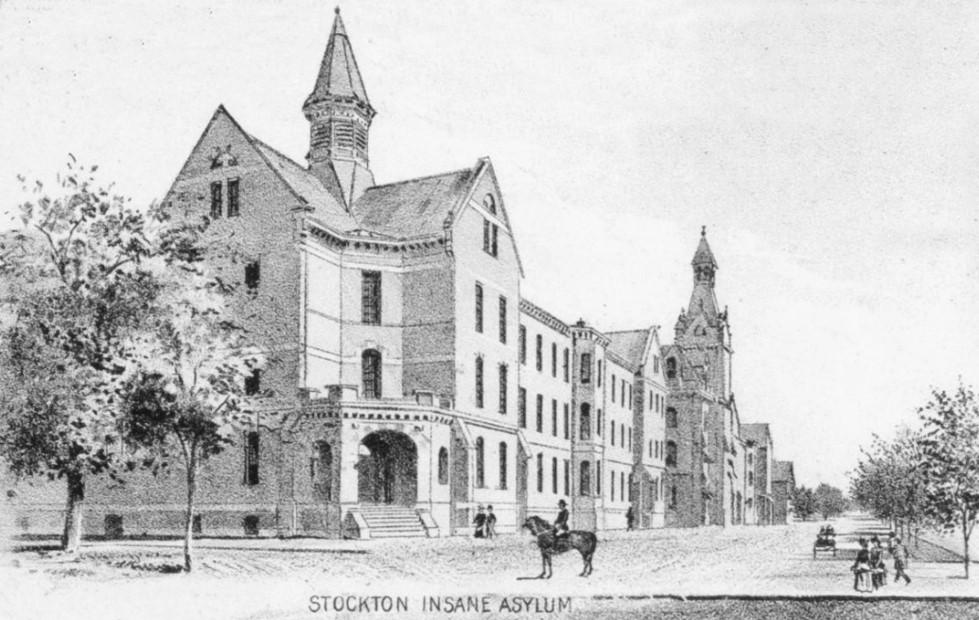
Officially known as National Homes for Disabled Volunteer Soldiers, several branches were scattered across the country. “Veterans were eligible for admittance if they were honorably discharged; had served in the regular, volunteer, or militia forces mustered into federal service; were disabled and without support; and were unable to earn a living.”60 Residents were able to check out at their own request.
Residents also received a small pension; Colter first received $12 a
month (about $350 in today’s dollars), which was later increased to $20 a month.61
Colter was admitted to the Sawtelle Disabled Veterans Home in Los Angeles on April 19, 1889. In September 1891, he was discharged at his own request.62 He later resided at the homes in Ohio, Virginia, and Maine. In the summer of 1904, he voluntarily left the Maine facility only to return two months later; he remained there for another three and a half years. What Colter did or where he lived in the intervals between veterans home stays is not known.
Sawtelle Veterans Home in Los Angeles, circa 1900. National Home for Disabled Volunteer Soldiers, Pacific Branch, Domiciliary No. 6, Wilshire & Sawtelle Boulevards, Los Angeles, Los Angeles County, California; photograph HABS CAL, 19-LOSAN, 12B-, courtesy of Library of Congress.
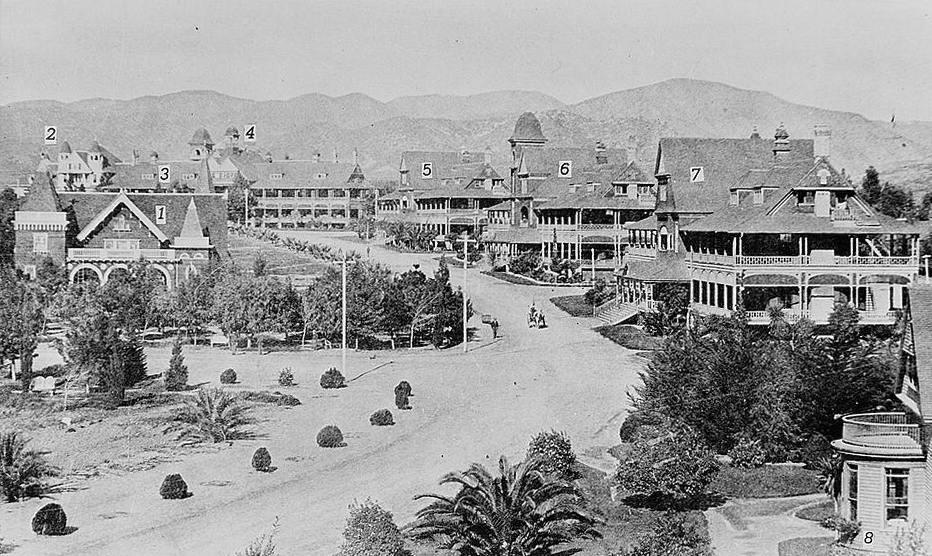
In 1908, again at his own request, Colter left the Maine veterans home and the federal system for good. At some point, he moved into a boarding house in Newark, New Jersey this became his last residence.
Colter passed away from unknown causes on October 13, 1909.63 One of his boarding house roommates found
a slip of paper with the name and address of Colter’s sister, Isabella Fleming, who lived in Flatlands, Long Island, New York. The boarder contacted Fleming with news of Colter’s death.
Colter was buried at Fairmount Cemetery in Newark, where a host of other Civil War veterans were interred.64 His death prompted another round of sensational news stories, which were riddled with more errors than those from 35 years earlier.
”
Tracking down the $200,000 legacy now fell to Fleming. Her son-in-law, Henry Heins, “engaged in an effort to trace up the bequest . . . and if his work is successful, Mrs. Fleming, who is over 70 years of age will come into the fortune that should have helped to brighten the last years of her brother’s life.”65 How much time Heins devoted to the search is unknown, but he was obviously unsuccessful, as is usually the case with a wild goose chase. Fleming died in 1915, leaving an estate worth about $7,000,66 a nice sum in those days but a far cry from Henry Colter’s apocryphal $200,000.
Lucile Saunders McDonald (18981992) was a trail-blazing journalist and historian who devoted much of her considerable talent to telling the history of the Pacific Northwest. In addition to many other writings, she contributed a weekly history column to The SeattleTimes. 67
In a 1954 column titled “Washington’s First Territorial Secretary,” ostensibly about Charles Mason, McDonald devoted the bulk of her story to the Colter affair. She thoroughly covered the background of the embezzlement, and related “Colter’s version of the story” wherein an honest Colter entrusted the money to a crooked but ultimately repentant Charles Jessup. McDonald then explained the “real” story according to the Olympia Courier of
1874: that Colter had embezzled the money and fled to the Chincha Islands off Peru, became ill, and “overwhelmed by pangs of conscience” entrusted the money to Jessup, who “pulled Colter’s own trick,” stole the money, and parlayed the ill-gotten funds into a fortune.68
Lucile McDonald took the story as far as she could, using the information available to a researcher in the 1950s. With today’s plethora of genealogy and newspaper websites, and other records available online, we can now surmise that: Colter did indeed steal the money; Jessup did not steal it but lost
Sketch of Henry Colter’s grave in Fairmount Cemetery, Newark, New Jersey. His headstone was supplied by the U.S. government, as were over a thousand others in this large cemetery. Sketch by author.
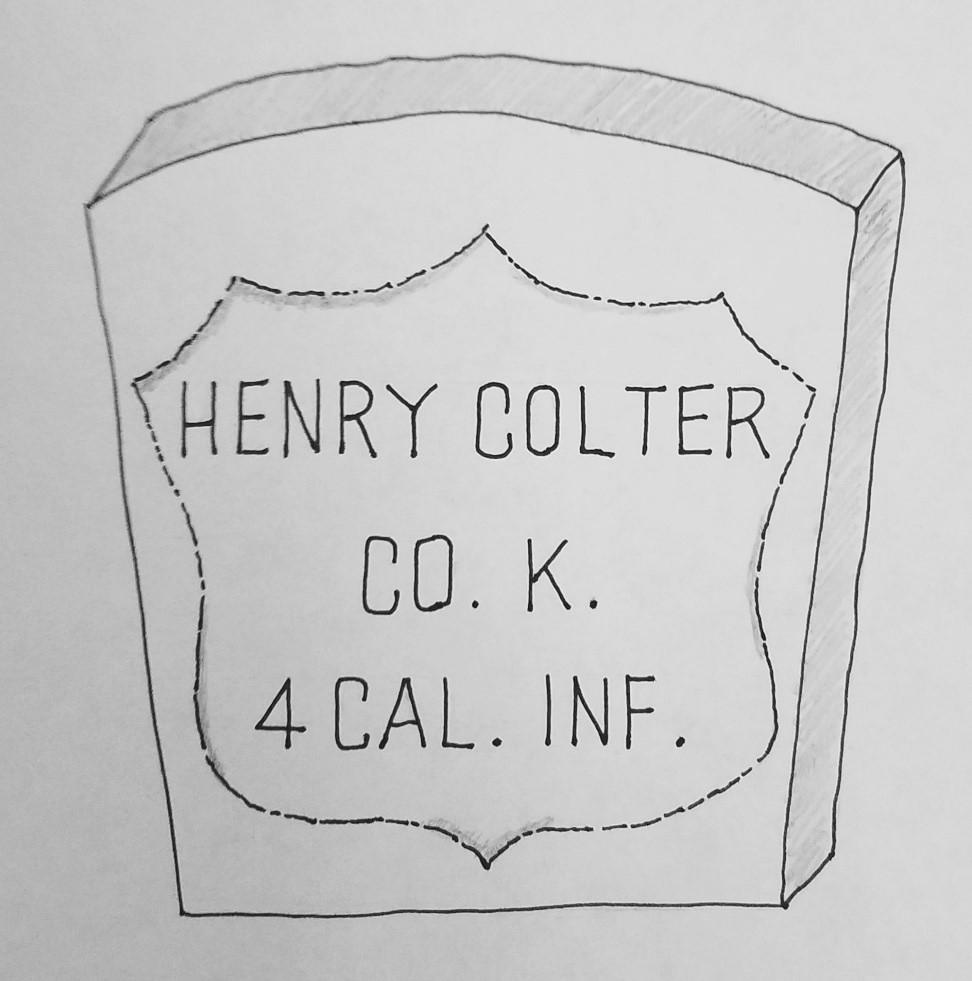
it to thieves; Jessup did not invest the money in South America; and Jessup neither made a fortune nor left one to Colter. But this still leaves many . . .
Colter did return east soon after the embezzlement, and told his story to John Parker Sr. (father of his exbusiness partner John Parker Jr.). Does this speak to his overall honesty, or was it merely a ploy to forestall prosecution or nasty rumors?
Who but Colter would have known the threads of truth woven through the web of lies told in 1874? Why did he feel the need to concoct such elaborate lies two decades after the crime? Mental issues? A mind addled by drink? A craving for attention, of any kind?
Why would anyone other than Colter have fabricated this story? Who was Colter’s accomplice, if indeed he had one? Colter seems to be the only one who would have benefited from the tale, and then only through celebrity, the occasional free lunch, or a pipedream of books and lectures.
Over a century and a half later, research has added many facts and some educated guesses to the tale, but we will probably never know the whole truth behind the Henry Colter affair.
Thanks to: Jewell Dunn, for assistance with genealogy research; and
the staff of Washington State Archives and California State Archives.
1 Lucile McDonald, “Washington’s First Territorial Secretary,” The Seattle Times, March 28, 1954, page 5.
2 “Northern Oregonians Vote to Split 1851-1855,” Territorial Timeline, Washington State Archives (https:// www.sos.wa.gov/archives/timeline/ timeline.aspx?s=1851&e=1855 : accessed June 16, 2021).
3 Don Brazier, History of the Washington State Legislature 1854-1963 (Olympia: Washington State Senate, 2000), pages 2-3. Lynn Erickson, “Sylvester’s Window” (https:// olympiahistory.org/wp-content/ uploads/2020/08/1856-Meet-theneighbors.pdf : accessed June 16, 2021).
4 New York, New York City Marriage Records, 1829-1940, 10 February 2018, Joseph H. Fleming and Isabella Colter Petrie, 23 Jun 1867, FamilySearch (https://familysearch.org/ ark:/61903/1:1:24ZV-VNQ : accessed July 5, 2021). Henry Colter, New Jersey, Essex County, Superintendent of Soldiers’ Burials, 1776-1979, database, 16 August 2020, New Jersey Department of State, Division of Archives and Record Management, Trenton, FamilySearch (https://Family Search.org : accessed July 5, 2021).
Detail from 1852 San Joaquin, California census. One of the Dent brothers is listed at the top, business partner James Vantine is listed second, and Henry Colter is listed fourth. Colter’s name is misspelled, as it was frequently, and his age was misstated. California State Census, 1852, San Joaquin, State Archives, Sacramento, FamilySearch (http://familysearch.org : accessed May 19, 2021).

5 California State Census, 1852, San Joaquin, image 97 of 115, citing Legislature, State Archives, Sacramento, FamilySearch (http://familysearch .org: 21 May 2014 : accessed May 19, 2021).
6 “An Heir,” The Brooklyn Daily Eagle [New York], August 28, 1874, page 4.
7 In 1852, Joseph Gregory sold his express business to Wells, Fargo & Co. Steve Whitington Collection of Western Express Covers (www.rfrajola.com/ whitington/whitingtonp6.htm : accessed May 19, 2021). John G. Parker Jr., Puget Sound, handwritten manuscript, BANC MSS P-B 16 v.1, Hubert Howe Bancroft Collection, The Bancroft Library, University of California, Berkeley. Parker’s manuscript was published in the December 2017 issue of the Thurston County Historical Journal.
8 Untitled, The Columbian, May 28, 1853, page 2. Advertisement, The Columbian, May 28, 1853, page 3.
9 Mrs. J. G. Parker, “Historical,” “Beautiful Olympia Section,” The Morning Olympian, April 23, 1905, page 1.
10 Hubert Howe Bancroft, History of Washington, Idaho, and Montana, Volume XXXI (San Francisco: The History Company, 1890), pages 64, 84-85. “RELIEF OF JOHN G. PARKER JR.,” Index to the Miscellaneous Documents of the House of Representatives for the First and Second Sessions of the ThirtyFourth Congress, 1856, Volume 1, No. 6 (Washington: Cornelius Wendell, Printer, 1856) (https://books.google. com : accessed July 1, 2021).
11 “To The Public,” Pioneer and Democrat [Olympia], April 1, 1854, page 2.
12 Advertisement, Pioneer and Democrat, April 8, 1854, page 3.
13 Journal of the Council of the Territory of Washington: together with the Memorials and Joint Resolutions of the First Session of Legislative Assembly Begun and Held at Olympia, February 27th , 1854, and of the Independence of the United States, the Seventy-Ninth (Olympia: Geo. B. Goudy, Public Printer, 1855), page 209 (https://books. google.com : accessed May 17, 2021).
14 “Appropriations,” Pioneer and Democrat, October 21, 1854, page 2. A Century of Lawmaking for a New Nation: U.S. Congressional Documents and Debates, 1774 – 1875, Bills and Resolutions, House of Representatives, 33rd Congress, 1st Session, Bill (H.R.) 48 of 859, page 39 (memory.loc.gov/cgibin/ampage?collId=llhb&fileName =033/llhb033.db&recNum=384 : accessed July 1, 2021).
15 Elisha Whittlesey to Charles Mason, October 3, 1854, Charles Mason Papers, folder 2 of 3, Manuscript 0010, Washington State Library, Tumwater, Washington.
16 John G. Parker Jr., Puget Sound.
17 “Removal,” Pioneer and Democrat, November 25, 1854, page 3.
Issue 2 (Washington: U.S. Government Printing Office, 1856), page 676.
20 John G. Parker, Sr. to John G. Parker, Jr., August 8, 1874, Folder 28, Box 4, Accession 40, McMicken Family Papers, University of Washington Libraries, Seattle, Washington.
21 “John Goldsbury Parker,” Thurston County Pioneers, Washington Rural Heritage (www.washingtonruralheri tage.org/digital/collection/pioneers/ search/searchterm/parker : accessed June 30, 2021).
22 John G. Parker, Sr. to Alfred Parker, August 10, 1874, Folder 22, Box 4, Accession 40, McMicken Family Papers, University of Washington Libraries.
18 “RELIEF OF JOHN G. PARKER JR.”
19 United States Congress, House, Journal of the House of Representatives of the United States, Volume 34,
23 Colter worked as a “coal heaver” for his passage on the North Star, and thus his name did not appear on any published passenger lists. Coincidentally, the North Star also provided a way home for Charles Jessup, the man Colter later blamed for stealing the money. “An Heir.” United States National Homes for Disabled Volunteer Soldiers, 1866-1938, 22 May 2014, Hampton, Virginia > Register no. 10394-11894 > image 1 of 772; citing NARA microfilm publication T1749 Washington, D.C.: National Archives and Records Administration, n.d., database with images, FamilySearch (https://familysearch.org/ ark:/61903/3:1:33S7-9PDF-SQ87? cc=1916230&wc=M6NZ-TTL%3A2031
18801%2C203154101 : accessed May 25, 2021).
24 “Prosecutions for the offenses of murder and arson where death ensues, may be commenced at any period after the commission of the offense, or offenses, the punishment of which may be by imprisonment in the penitentiary, within three years after their commission, and for all other offenses within one year after their commission . . .” Statutes of the Territory of Washington, Being the Code Passed by the Legislative Assembly, at Their First Session Begun and Held at Olympia, February 27th, 1854 (Olympia: Geo. B. Goudy, Public Printer, 1855), page 77 (https://leg.wa.gov/CodeReviser/docu ments/sessionlaw/1854pam1. pdf : accessed October 13, 2021).
25 “An Heir.”
26 Will Gorenfeld, History of the First Dragoons (www.chargeofthedragoons. com/2004/03/history-of-the-firstdragoons/ : accessed May 21, 2021). United States National Homes for Disabled Volunteer Soldiers, 1866-1938, 22 May 2014, Hampton, Virginia > Register no. 10394-11894 > image 1 of 772; citing NARA microfilm publication T1749 Washington, D.C.: National Archives and Records Administration, n.d., database with images, Family Search (https://familysearch.org/ ark:/61903/3:1:33S7-9PDF-SQ87?
cc=1916230&wc=M6NZ-TTL%3A2031 18801%2C203154101 : accessed May 25, 2021).
27 San Francisco City directory, 1860, pages 98 and 102, United States City and Business Directories, ca. 1749ca. 1990, FamilySearch (https://fam ilysearch.org/ark:/61903/3:1:3QHVJ3DB-2DJF?cc=3754697 : accessed May 19, 2021).
28 United States National Homes for Disabled Volunteer Soldiers, Hampton, Virginia. Union California Volunteers, Battle Unit Details, The Civil War, National Park Service (www. nps.gov/civilwar/search-battle-unitsdetail.htm?battleUnitCode= UCA0004RI : accessed May 21, 2021).
29 Advertisement, San Francisco Chronicle, July 24, 1874, page 1.
30 “After Many Days,” San Francisco Chronicle, July 27, 1874, page 3.
31 “To Whom It May Concern,” San Francisco Chronicle, July 31, 1874, page 2.
32 “A Curious Windfall,” Olympia Transcript, August 8, 1874, page 3.
33 “An Eddy in the Tide that Leads Colter to Fortune,” San Francisco Chronicle, August 20, 1874, page 3.
34 “Brief Mention,” Olympia Transcript, August 15, 1874, page 3. “Brief Mention,” Olympia Transcript, September 2, 1874, page 3.
35 “Twenty Years After,” Boston Journal, October 3, 1874.
41 “Henry Colter’s Windfall,” San Francisco Bulletin, September 4, 1874, page 3.
42 “Henry Colter’s Windfall,” San Francisco Chronicle, September 5, 1874, page 1.
43 “The JessupCoulter Case,” Daily Alta California [San Francisco], September 28, 1874, page 1.
Charles W. Jessup’s grave in Pine Hill Cemetery, Westfield, Massachusetts. Photograph by Marlana Giglio Ambridge, Memorial 65381588, Find a Grave.

44 “Death of Deacon Jessup of Westfield,” Springfield Republican [Massachusetts], September 21, 1872, page 2. “Things in Massachusetts,” Boston Traveler, October 4, 1872, page 2.
45 “Card from Henry Colter,” Daily Alta California, September 29, 1874, page 1.
46 Walter Arey would have been sixteen in 1854 old enough to have traveled with his sea captain father, and old enough to have clear memories of the Spitfire’s unusual passenger. United States Census, 1860, Massachusetts, Suffolk, Chelsea, 24 March 2017, image 89 of 335, database with images, FamilySearch (http://family search.org/ark:/61903/3:1:33SQGBSS-44L?cc=1473181&wc=7QGH-
YR2%3A1589422209%2C15894 28386 : accessed June 10, 2021).
47 “Spitfire,” The Maritime History Virtual Archives (www.bruzelius.info/ Nautica.html : accessed June 10, 2021).
48 Spitfire actually left San Francisco on March 22, 1854, bound for Callao. “Arrivals, Clearances, &c.,” Boston Courier, April 27, 1854, page 5.
49 “Colter’s Fortune,” Weekly Alta California, October 3, 1874, page 4.
50 New York Passenger Lists, 18201891, 21 May 2014, 146 - 20 Sep 1854-16 Oct 1854 > image 541 of 760; citing NARA microfilm publication M237, Washington D.C.: National Archives and Records Administration, n.d., database with images, FamilySearch (https://familysearch.org/ ark:/61903/3:1:939V-5T9J-NX?cc= 1849782&wd=MX62-FNG%3A16 5780001 : accessed June 2, 2021).
51 “Died,” Springfield Republican, October 24, 1854, page 2.
52 “Another ‘Open Letter’ from Henry Colter,” Weekly Alta California, October 10, 1874, page 5.
vertisement, Daily Alta California, April 11, 1854, page 3.
55 Philip H. Overmeyer, “George B. McClellan and the Pacific Northwest,” Pacific Northwest Quarterly, Vol. 32, No. 1 (Seattle: University of Washington, January 1941), pages 12 and 58. “Capt. McClellan,” Pioneer and Democrat, March 11, 1854, page 2.
56 William S. McFeely, Grant: A Biography (New York: W. W. Norton & Company, 1981), pages 48 and 50. Ron Chernow, Grant, (New York: Penguin Books, 2017), page 75. Jeff Benziger, “The times Ulysses Grant visited Knights Ferry,” 209 Magazine, August 6, 2020 (www.209magazine.com/ departments/in-the-know/timesulysses-grant-visited-knights-ferry/ : accessed July 2, 2021).
57 “Insane Man,” Carson Daily Appeal [Nevada], September 24, 1879, page 4.
58 “Insane Man Committed,” Carson Daily Appeal, September 28, 1879, page 4.
59 “Something About Henry Colter,” Carson Daily Appeal, October 1, 1879, page 4.
53 “Henry Colter’s Windfall,” San Francisco Chronicle, August 1, 1874, page 3.
54 Advertisement, Weekly Oregonian [Portland], April 8, 1854, page 3. Ad-
60 Trevor K. Plante, “The National Home for Disabled Volunteer Soldiers,” Prologue Magazine, Spring 2004, Volume 36, No. 1 (https:// www.archives.gov/publications/ prologue/2004/spring/soldiershome.html : accessed June 21, 2021). “United States Military Old Soldiers
The steamer North Star was built in 1853 for Cornelius Vanderbilt, and was used as his private yacht for a voyage to Europe. For most of 1854 and 1855, the ship ran a fast passenger service between New York and Aspinwall. Panama Route Ships, theshipslist.com (www.theshipslist.com/ships/descriptions/panama fleet.shtml : accessed July 2, 2021). Image from John Choules, The Cruise of the Steam Yacht North Star (New York: Evans and Dickerson, 1854).

Home Records,” FamilySearch (www.familysearch.org/wiki/en/ United_States_Military _Old_Soldiers_Home_Records : accessed June 21, 2021).
61 Henry Colter’s pension certificate was numbered 631.617; this number, unique to Colter, was the best way to track his movements through the federal system. United States Veterans Administration Pension Payment Cards, 1907-1933, 22 May 2014, image 196 of 735; citing NARA microfilm
publication M850, Washington, D.C.: National Archives and Records Administration, n.d., database with images, FamilySearch (https://family search.org/ark:/61903/3:1:939KFH73-15?cc=1832324&wc=M6RR6TP%3A161961901 : accessed June 22, 2021).
62 Sawtelle Disabled Veterans Home, Los Angeles Case Files, Roll 194, Pacific Branch, Sawtelle, California, Nos. 1-1499, page 176. United States National Homes for Disabled Volunteer
Soldiers, 1866-1938, 22 May 2014, Sawtelle, California > Register no. 00001-01499 > image 4 of 771; citing NARA microfilm publication T1749 Washington, D.C.: National Archives and Records Administration, n.d., database with images, FamilySearch (https://familysearch.org/ark:/619 03/3:1:33SQ-GPTZ-7H73?cc=1916 230&wc=M6NZ-RTL%3A203119201% 2C20314301 : accessed May 25, 2021).
63 United States Veterans Administration Pension Payment Cards, 19071933.
64 Colter, Henry, New Jersey Civil War Gravestones, Fairmount (Newark) Cemetery, (https://newjerseycivil wargravestones.org/cemetery.php?
cemID=378 : accessed June 28, 2021). Over 1,400 Civil War veterans are buried at Fairmount Cemetery. Many of the gravestones here are identical in style to Colter’s, so were probably supplied by the federal government.
“Headstones Provided for Union Civil War Veterans, ca. 1879-ca. 1903,” Military Records, National Archives (www.archives.gov/research/military/ civil-war/union/veteran-headstones. html : accessed June 28, 2021).
York, Kings County Estate Files, 1866 -1923, 21 May 2014, Kings County > Fl > Fleming, Isabella (1915); Surrogate Court, Brooklyn, database with images, FamilySearch (https://family search.org/ark:/61903/3:1:939NRVDV-2?cc=1466356&wc=MPWM-TQ V%3A44954901%2C71777401%2C7 1906501 : accessed June 25, 2021).
67 Biographical Note, Lucile Saunders McDonald Papers, 1941-1990, University of Washington Libraries, Special Collections.
68 Lucile McDonald, “Washington’s First Territorial Secretary.”
Karen L. Johnson has worked in the museum field since 2001. She has written many history articles and coauthored two books about a Washington pioneer. She currently serves as the curator at the Olympia Tumwater Foundation, and as the editor of the Thurston County Historical Journal.
65 “Seeks Lost Gold Years; Death Baffles Success,” The Brooklyn Daily Eagle [New York], November 20, 1909, page 1.
66 $7,000 in 1915 would equal over $181,000 today, whereas $200,000 would equal over $5 million. New
Ruby Bishop is shown here playing the piano at Vito’s restaurant and lounge in Seattle, January 2015.
Ruby Carol Cogwell was born December 22, 1919 to Margaret Ann (Carter) and James Edward Cogwell on their farm near Rochester. One day her brother brought home a piano, and Ruby taught herself to play. She also danced at state fairs, and fronted a twelve-piece band called the Centralia Buccaneers.
She attended the University of Washington for one year her parents hoped she would become a pharmacist—but she left school to go into music full time.
She supplemented her music income by working as a Boeing mechanic and draftsman during World War II, and also as a stenographer and beautician.
At some point, Ruby married Alexander Bishop, but divorced him in 1968 on grounds of cruelty.
In her fifties, Ruby was recruited by the U.S. Army to entertain troops in South Korea and South Vietnam.
In 1971, Bishop decided to take on a new career: cabinetmaking. She stated that “women can make a contribution to cabinetmaking, particularly in the design area, ‘because most kitchen cabinets are just some man’s idea of providing space and putting a door on it.’ ”
During her time in college, she organized a benefit auction and concert to
raise scholarship funds for needy students. Bishop eventually graduated from the Seattle Community College program, and redesigned and built her home kitchen cabinets.
Over the years, Ruby entertained at Caston’s Charcoal Broiler, Ivar’s Fifth Avenue, Norselander, Spindrift, Bull n’ Bear, and other well-known Seattle clubs and restaurants.
She hobnobbed with the likes of Louis Armstrong, Duke Ellington, and Cab Calloway. In 2015, she was inducted into the Seattle Jazz Hall of Fame. Even at age 95, Ruby was still playing three hours of piano every Sunday night.
She died June 23, 2019 at the age of 99.
Sources: Bishop divorce record, Department of Health, Divorce Certificates, Washington State Archives, Digital Archives (http://digitalarchives.wa.gov : accessed November 4, 2021). Don Duncan, “Cabinetmaking singer gives fellow students a hand,” Seattle Daily Times, January 27, 1971, page 12 (www. Genealogybank.com : accessed November 4, 2021). Nicole Brodeur, “Ruby Bishop, Seattle jazz artist and queen of the keys at Vito’s, dies at 99,” Seattle Times, June 27, 2019 (www.seattletimes .com : accessed November 4, 2021). Marianne Hanson, “Ruby Bishop,” BlackPast.org (https:www.blackpast.org/ african-american-history/bishop-ruby1919/ : accessed November 4, 2021).
This well-known African-American jazz singer and pianist spent most of her professional life in Seattle, but she was born in Thurston County. Do you recognize her? See inside back cover for more information. Photograph courtesy of Joe Mabel, via Wikimedia Commons, Creative Commons Attribution 3.0 Unported license.
